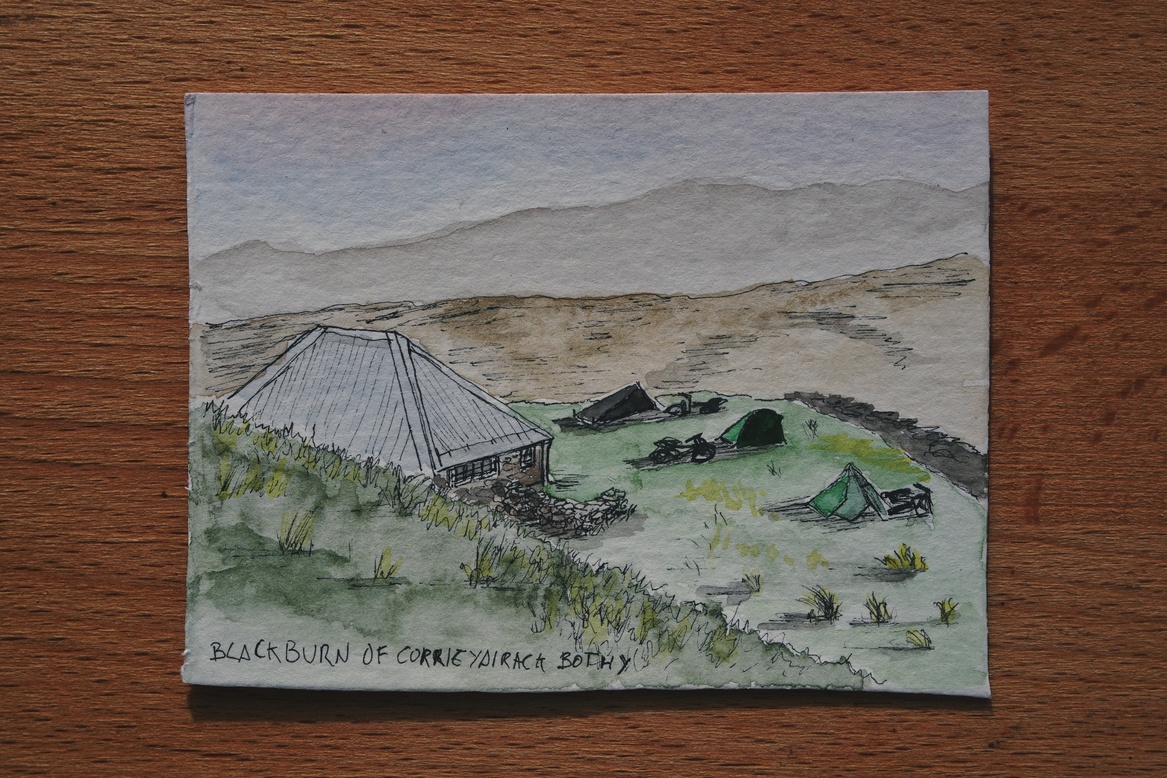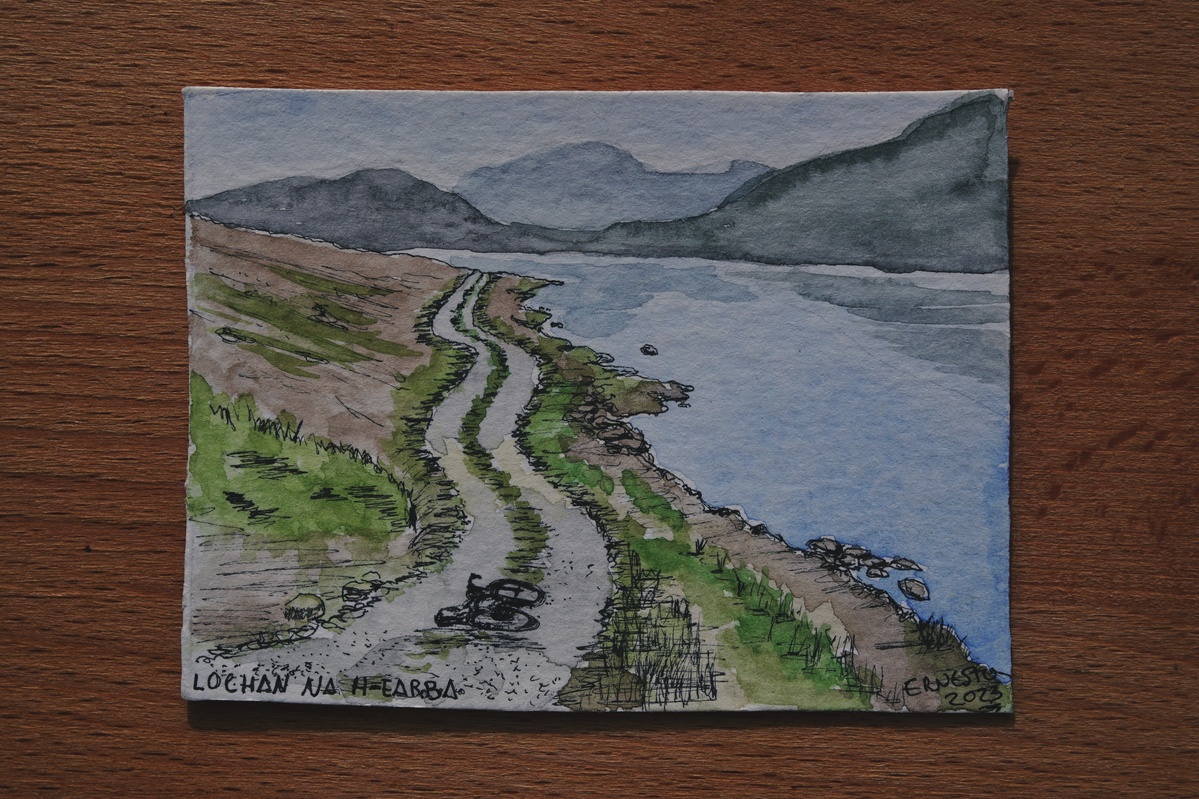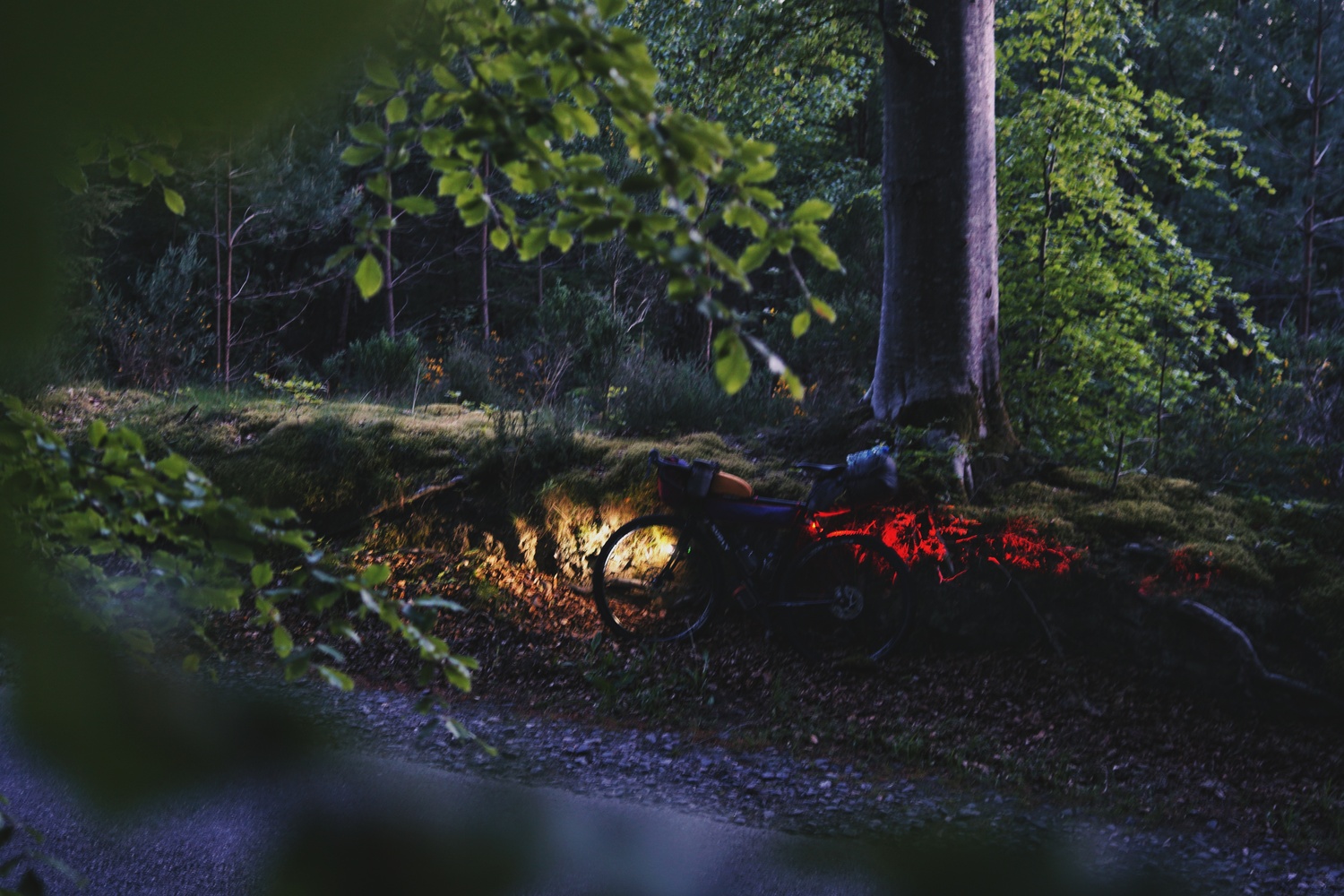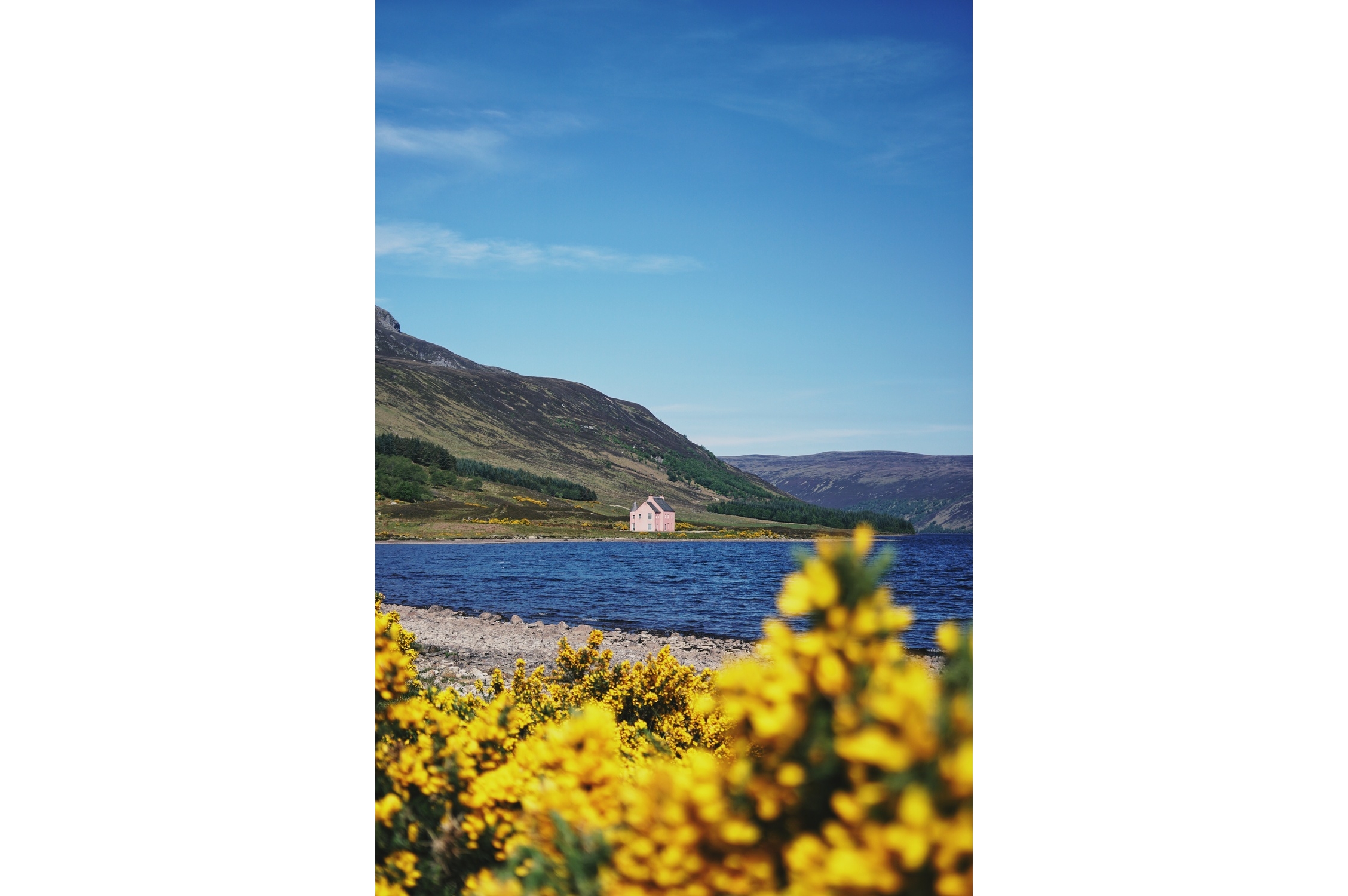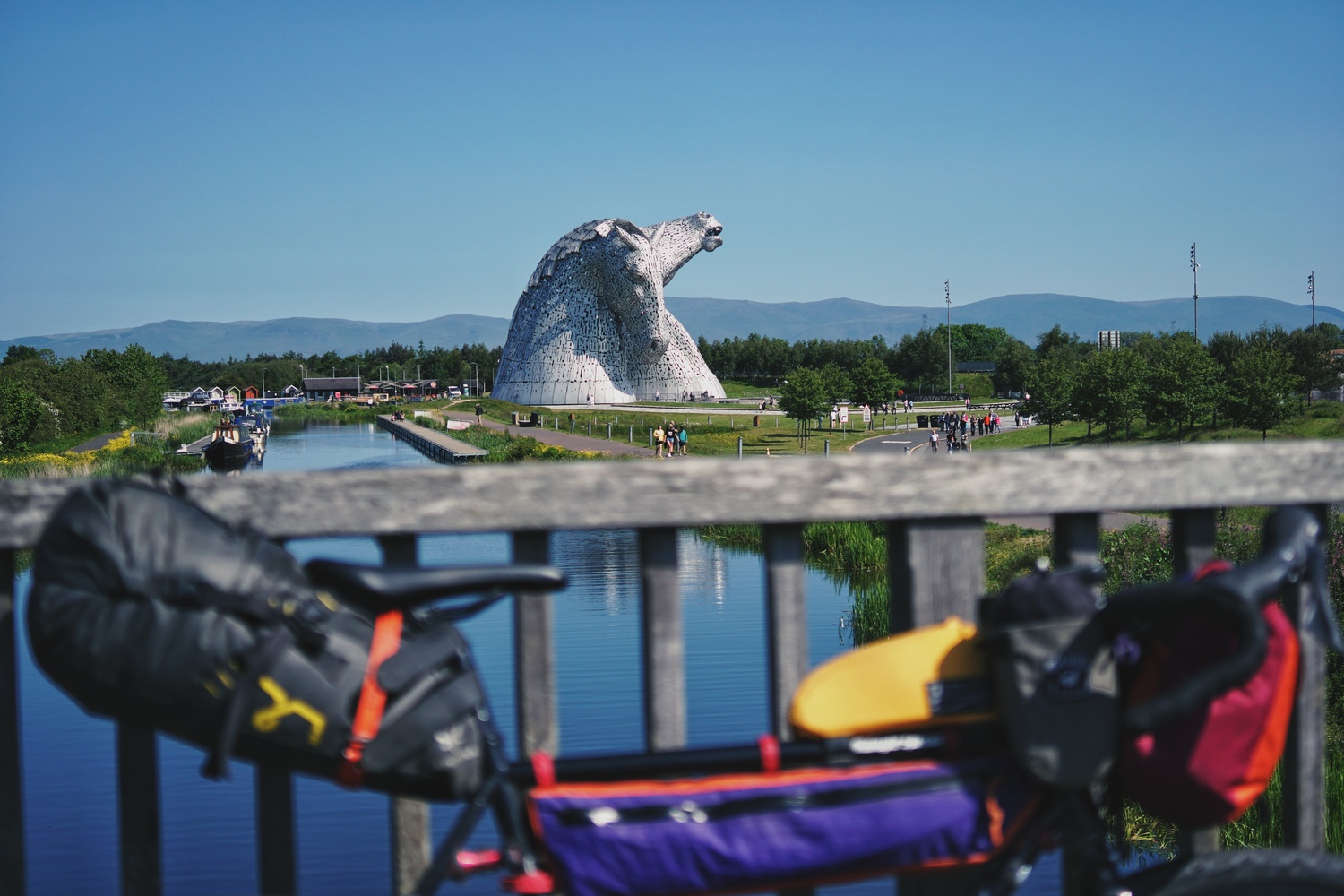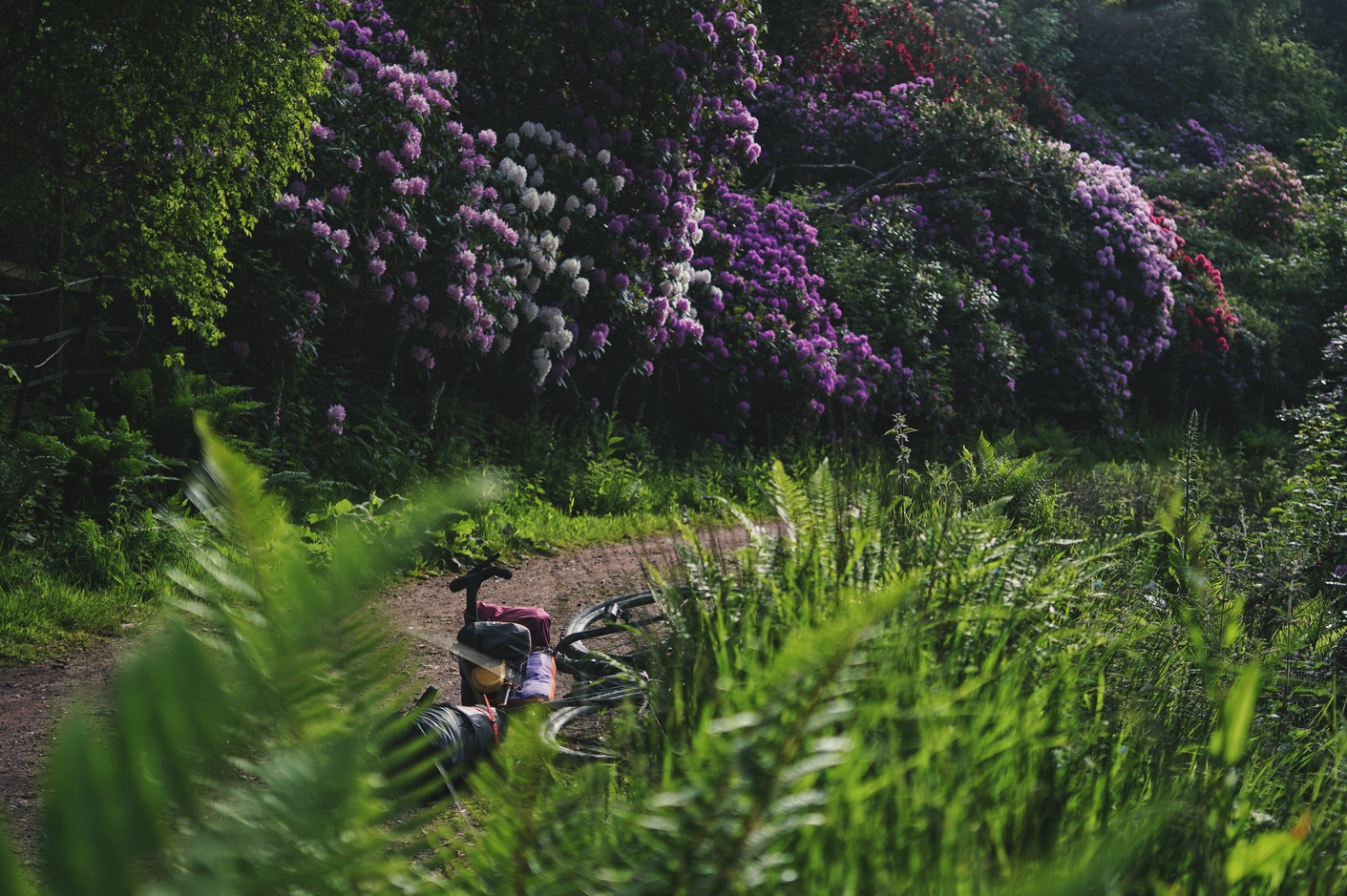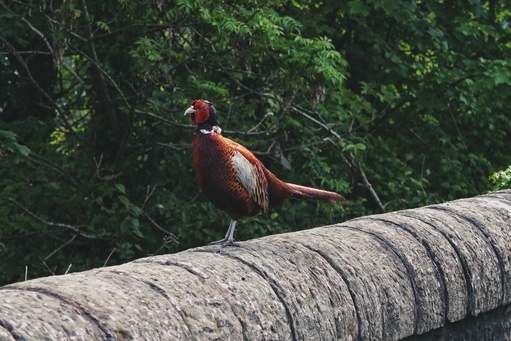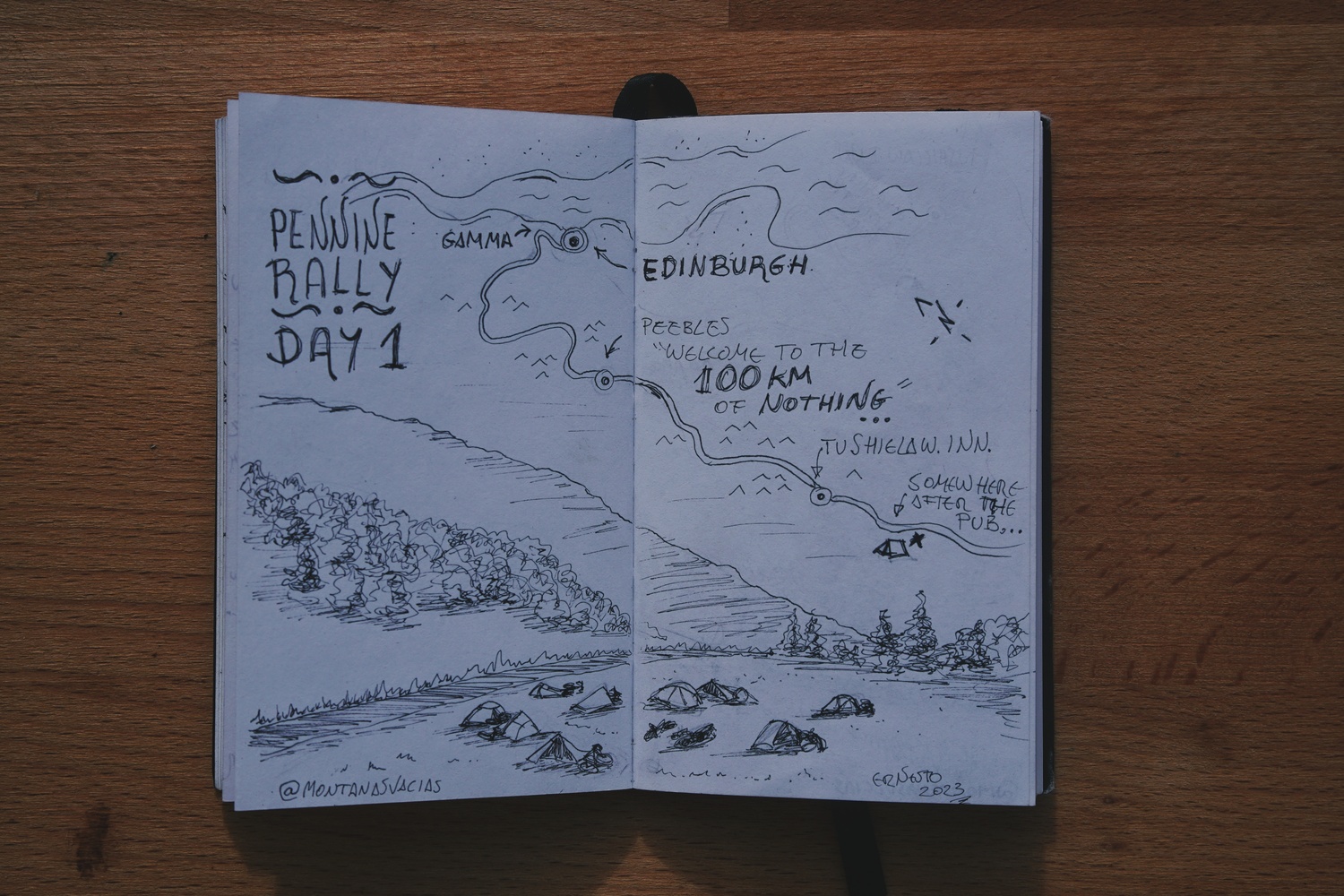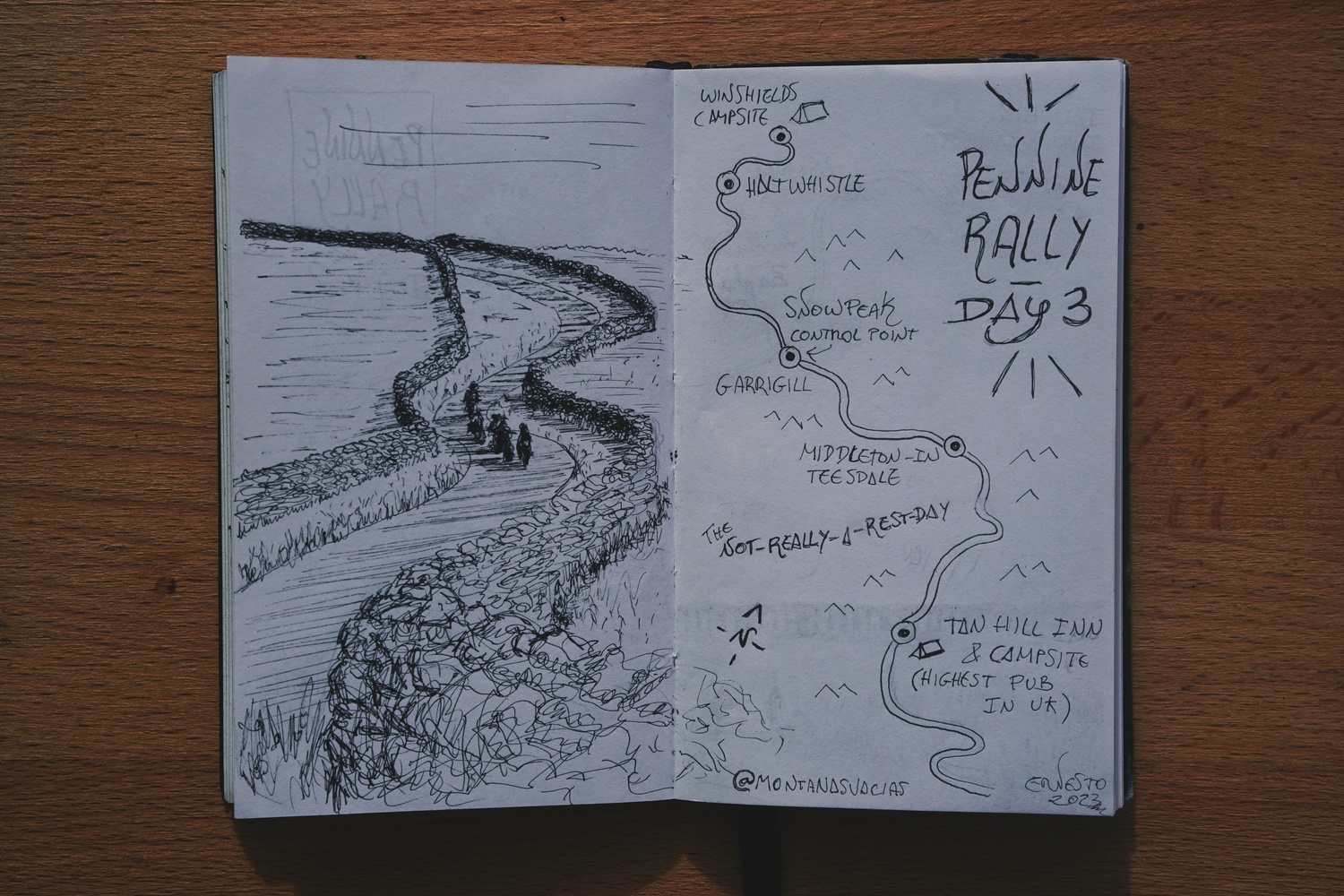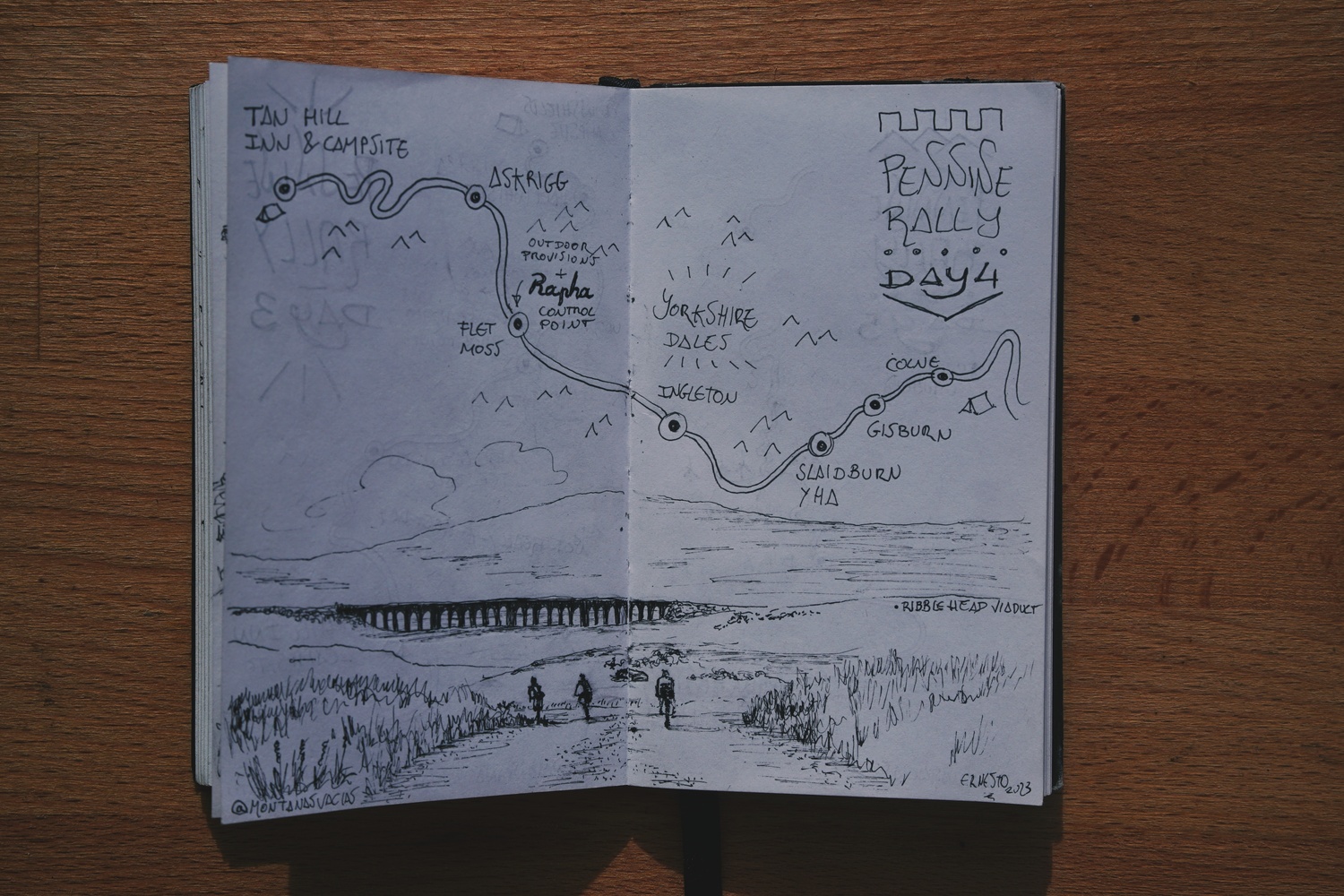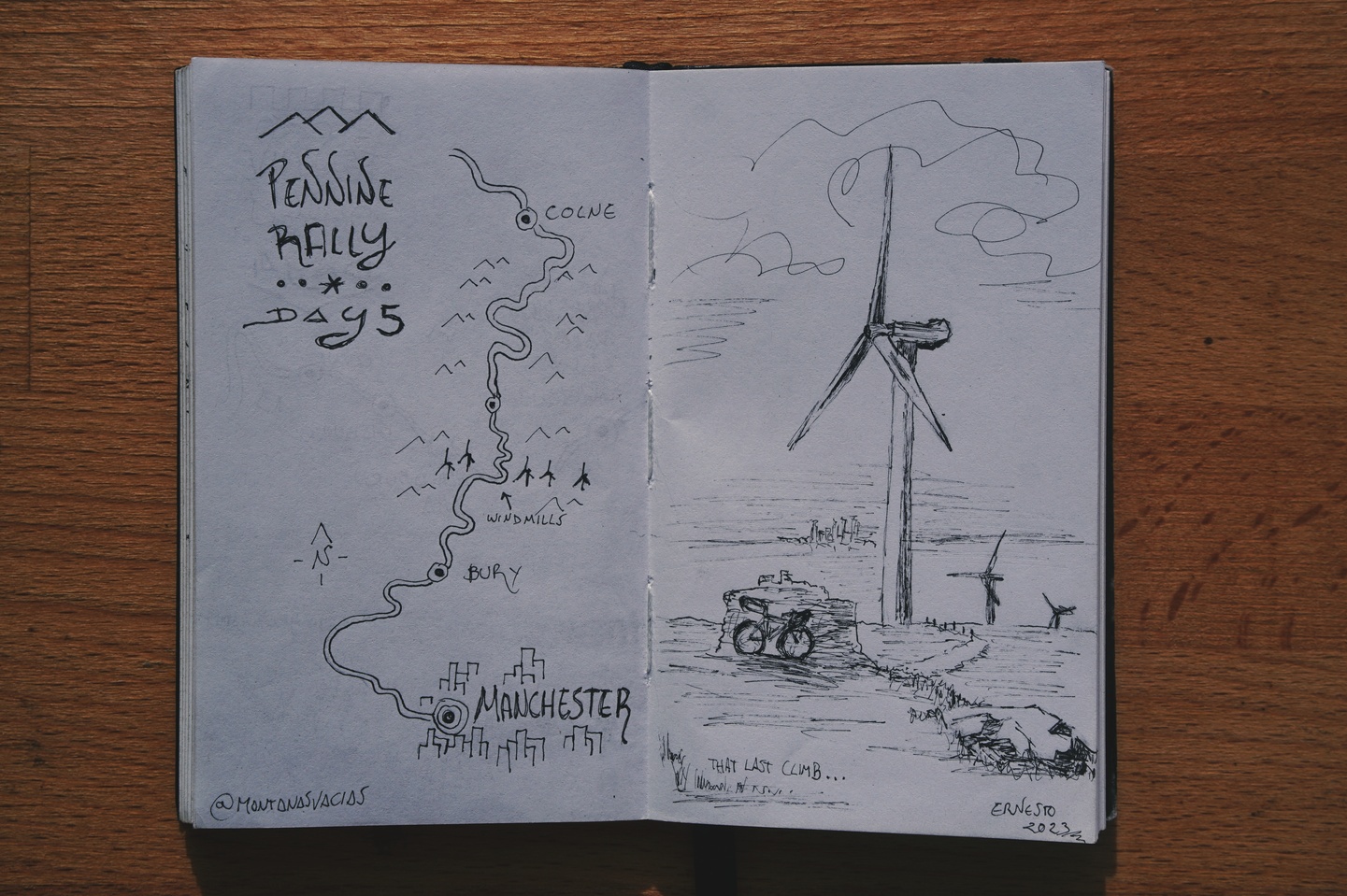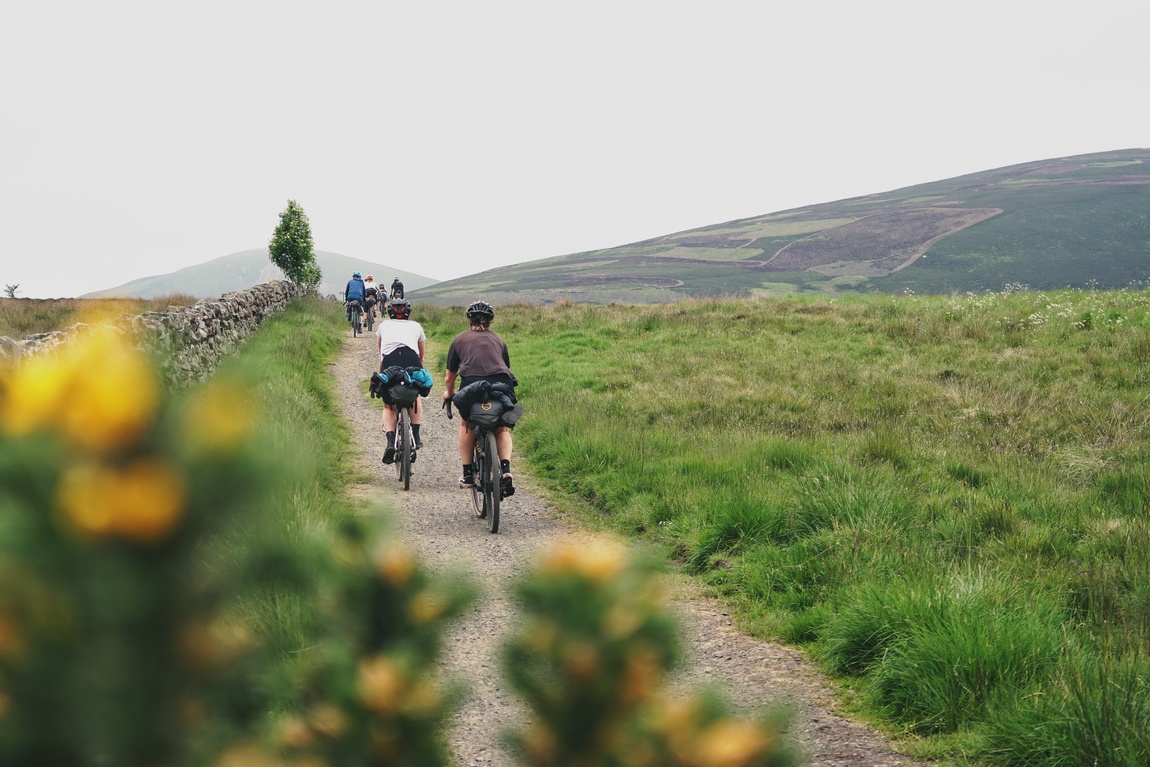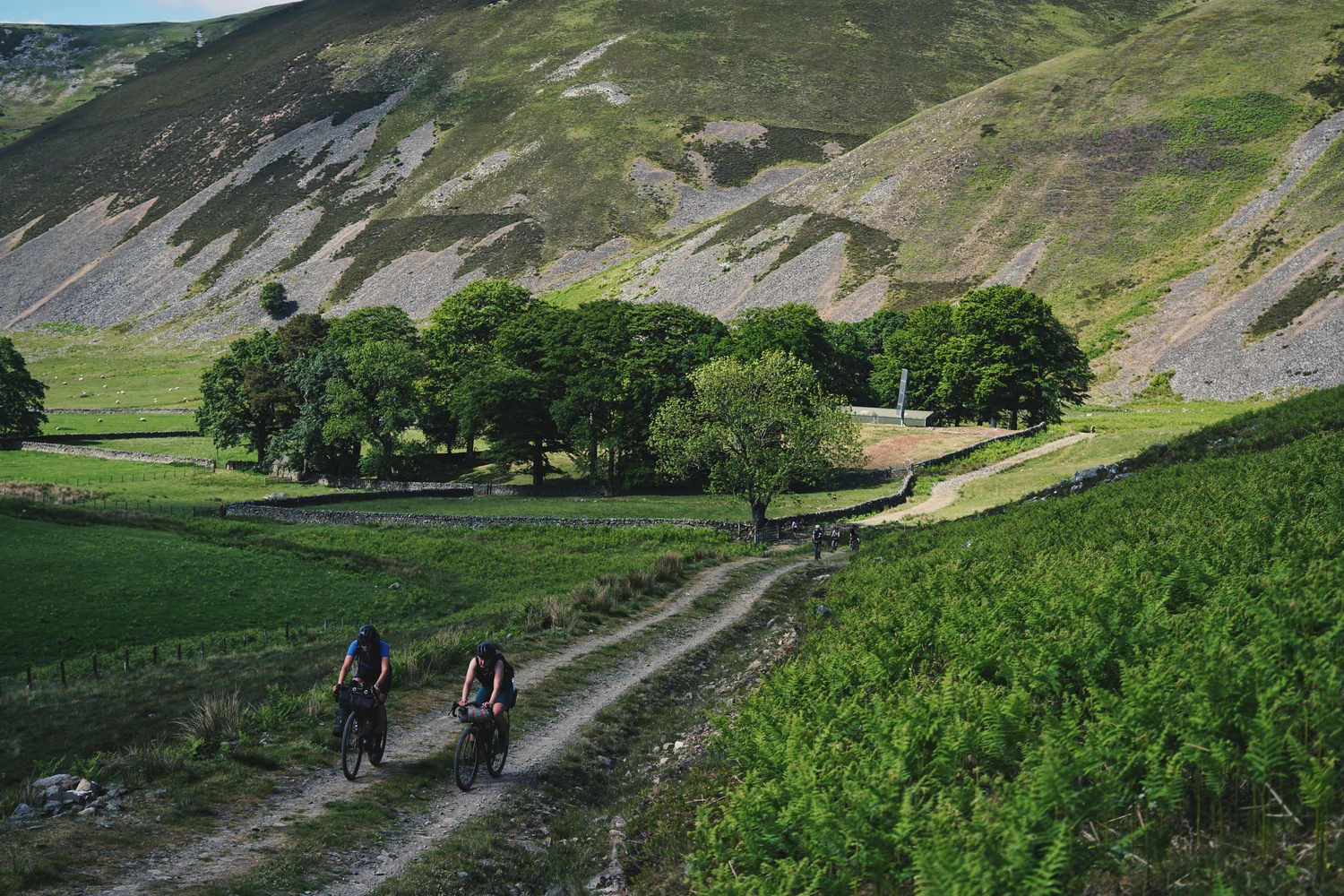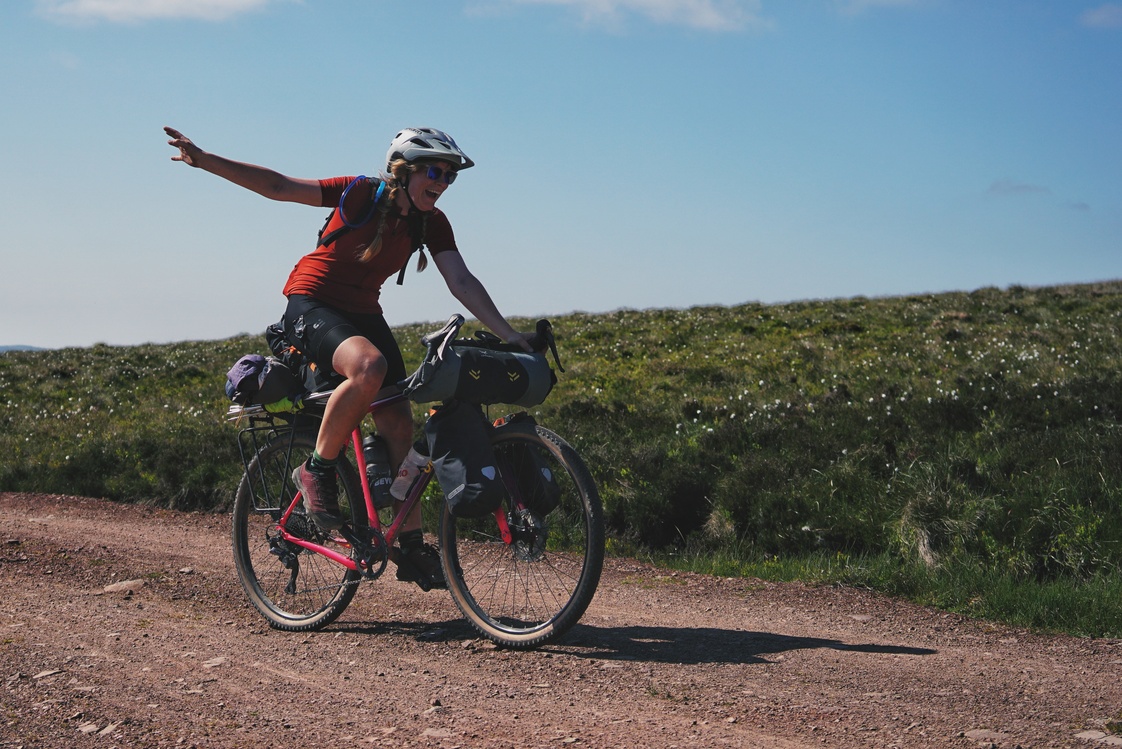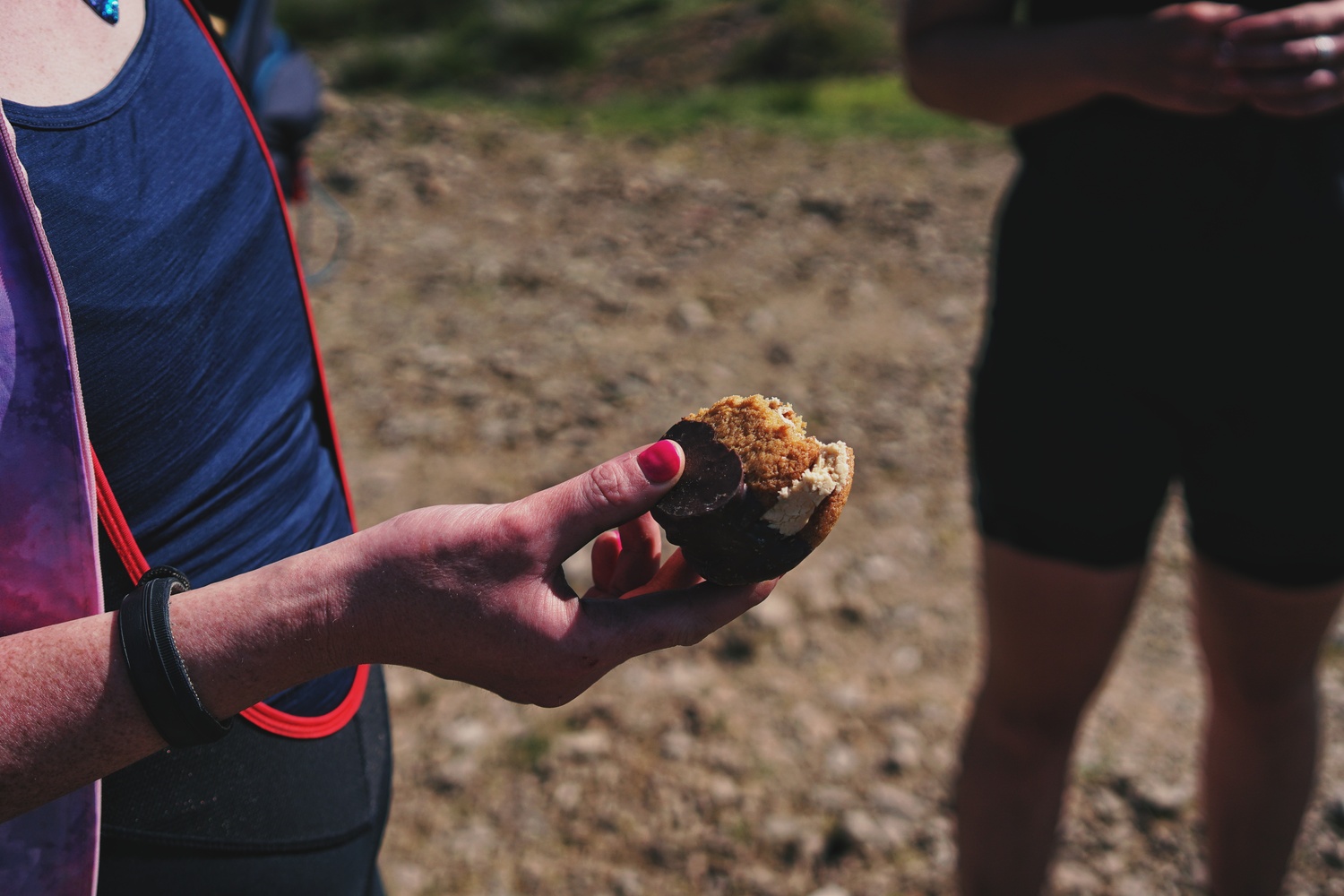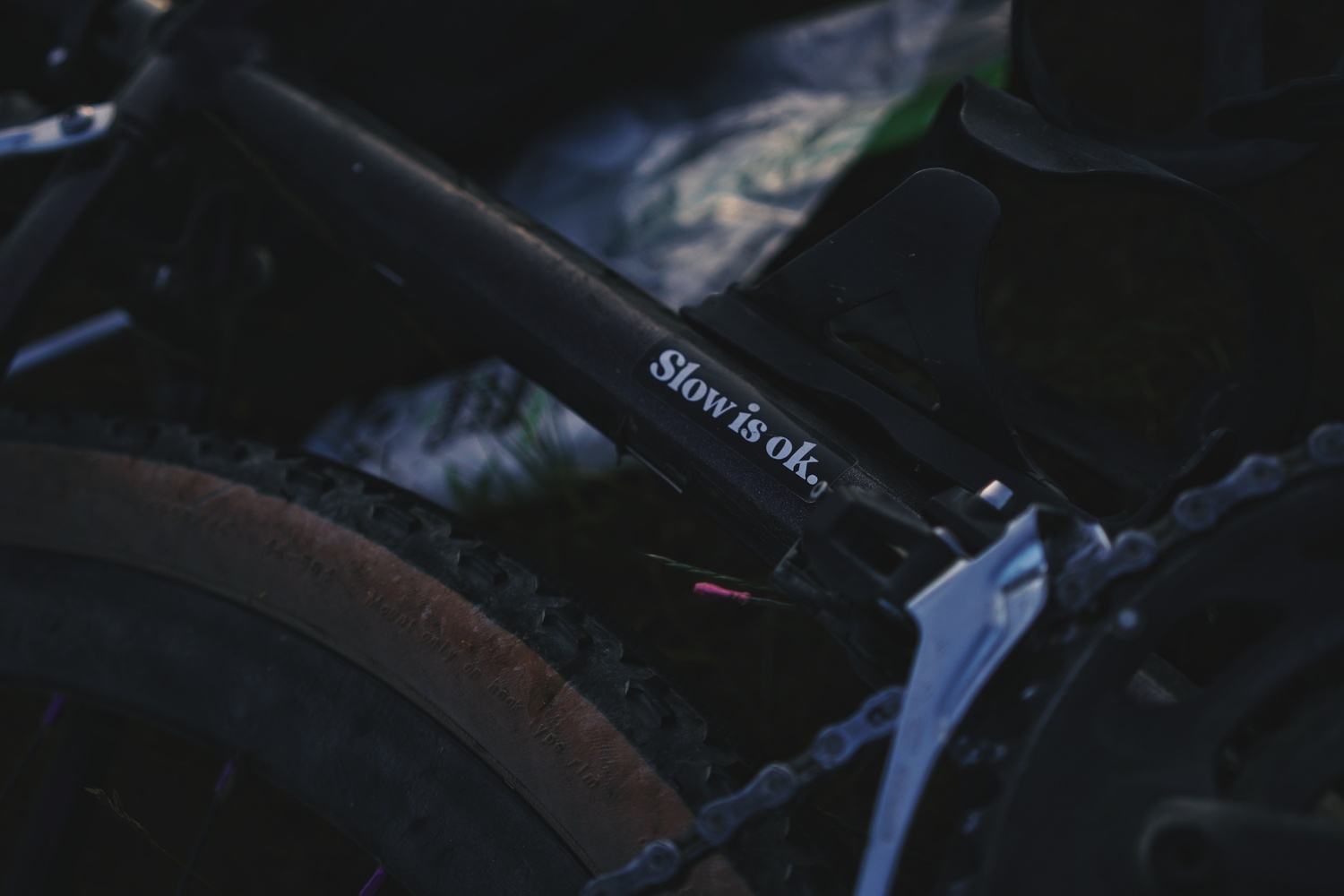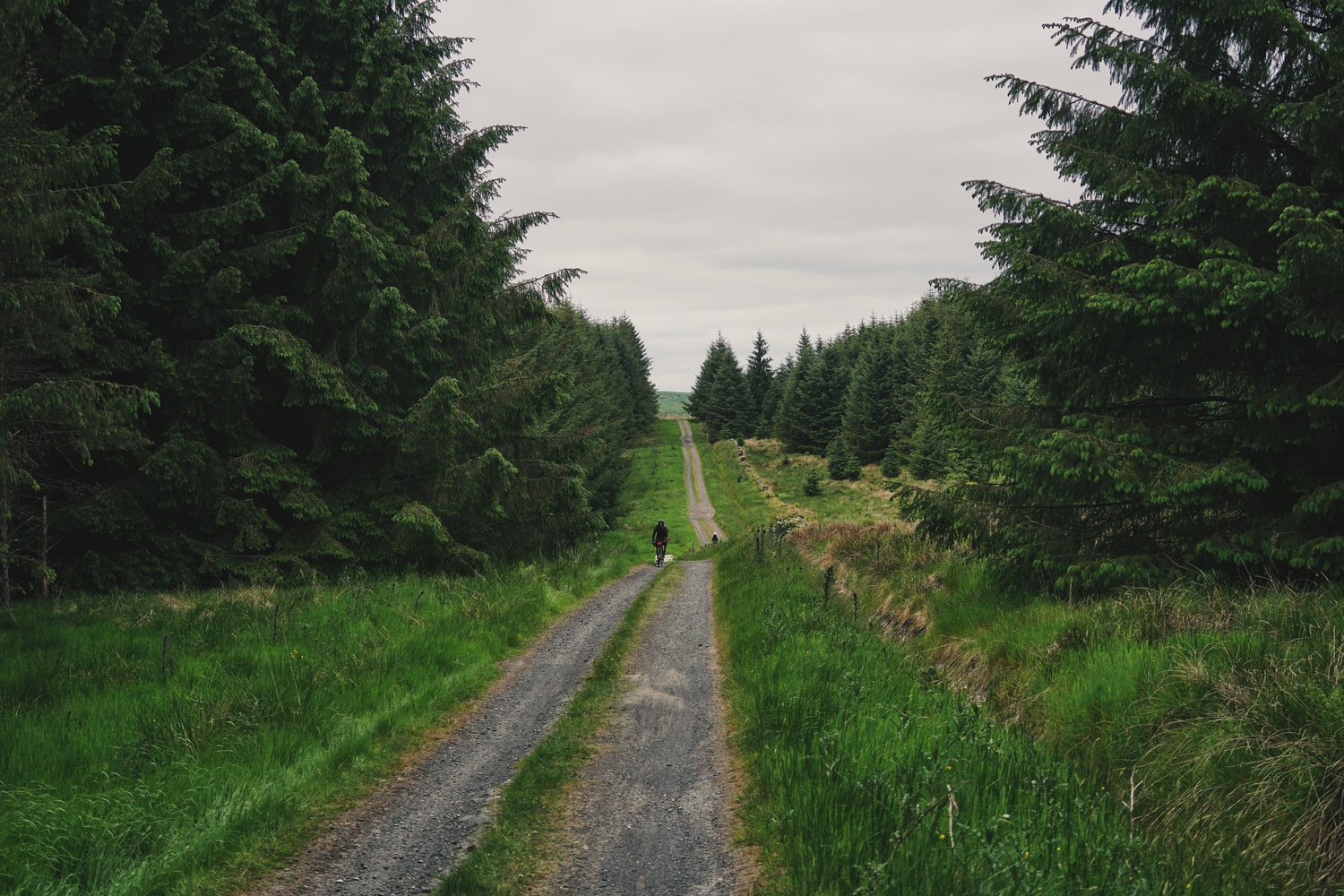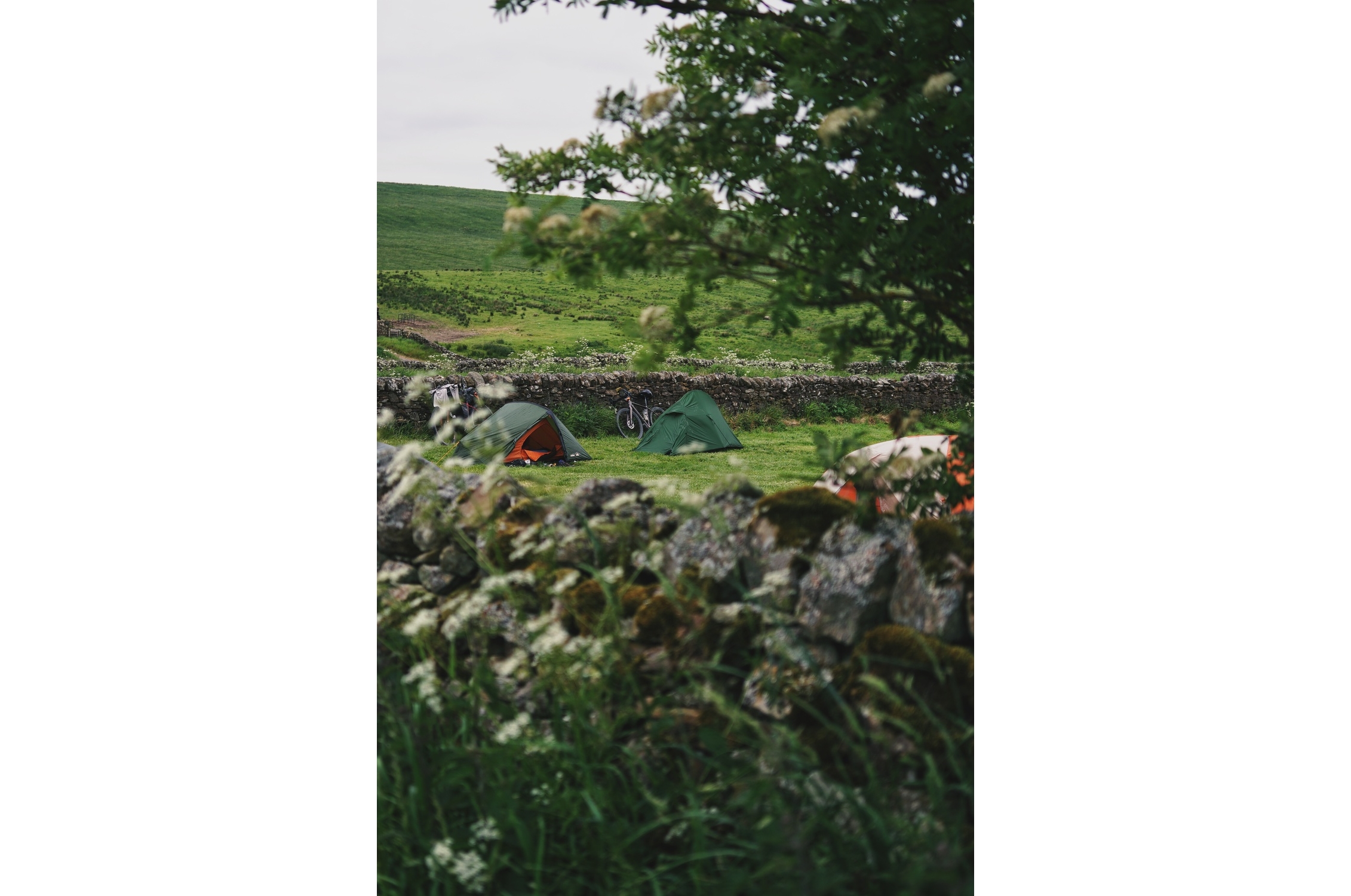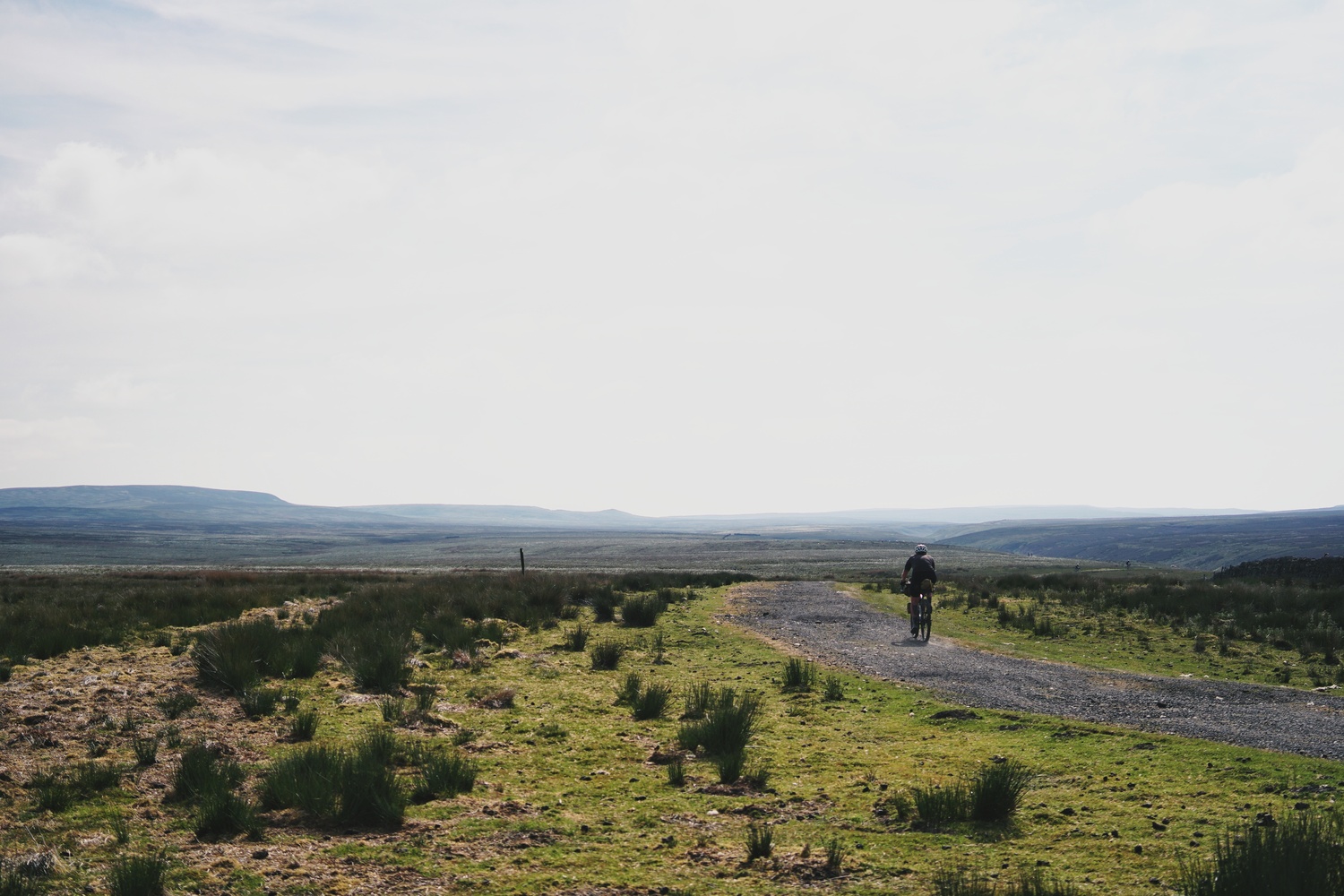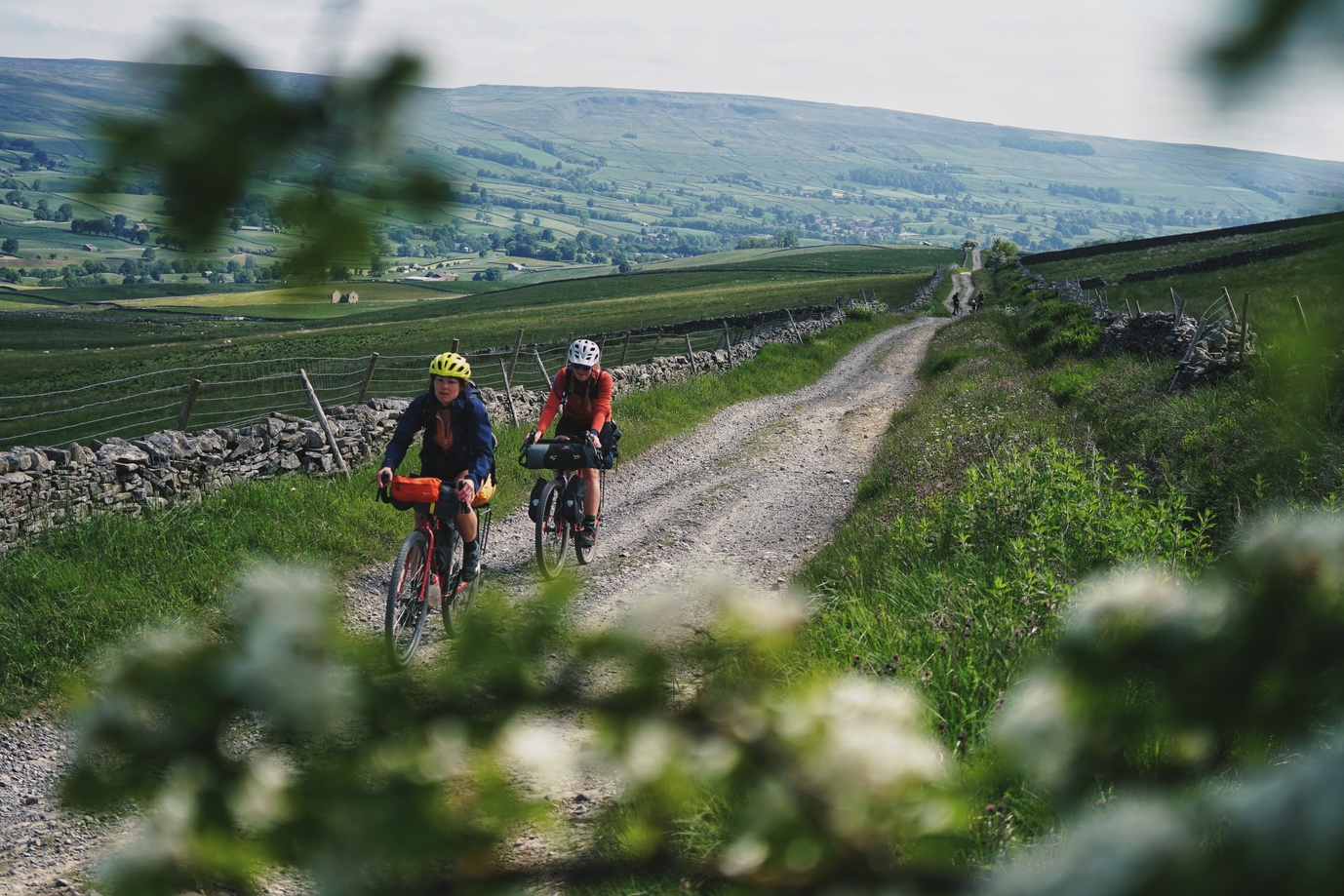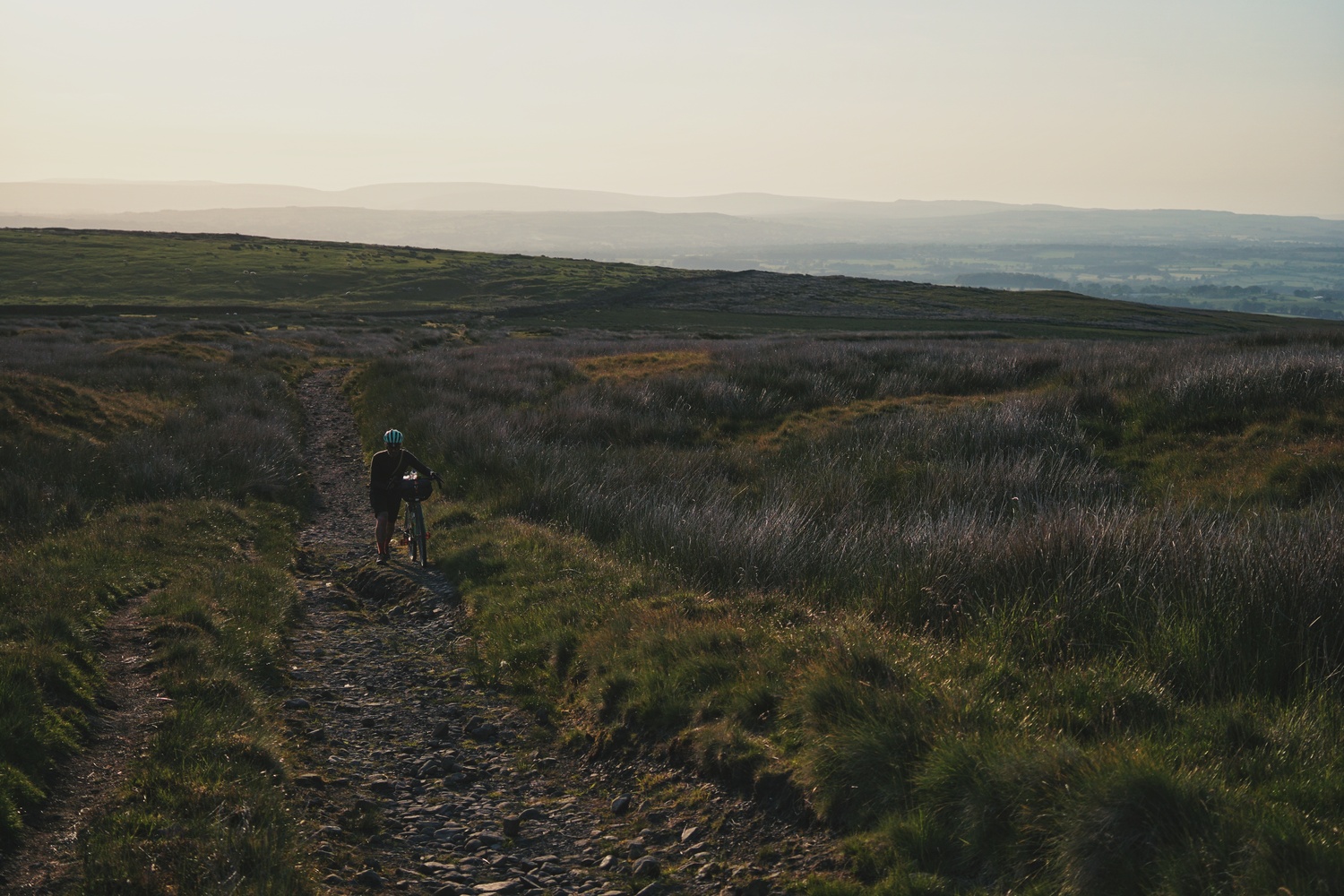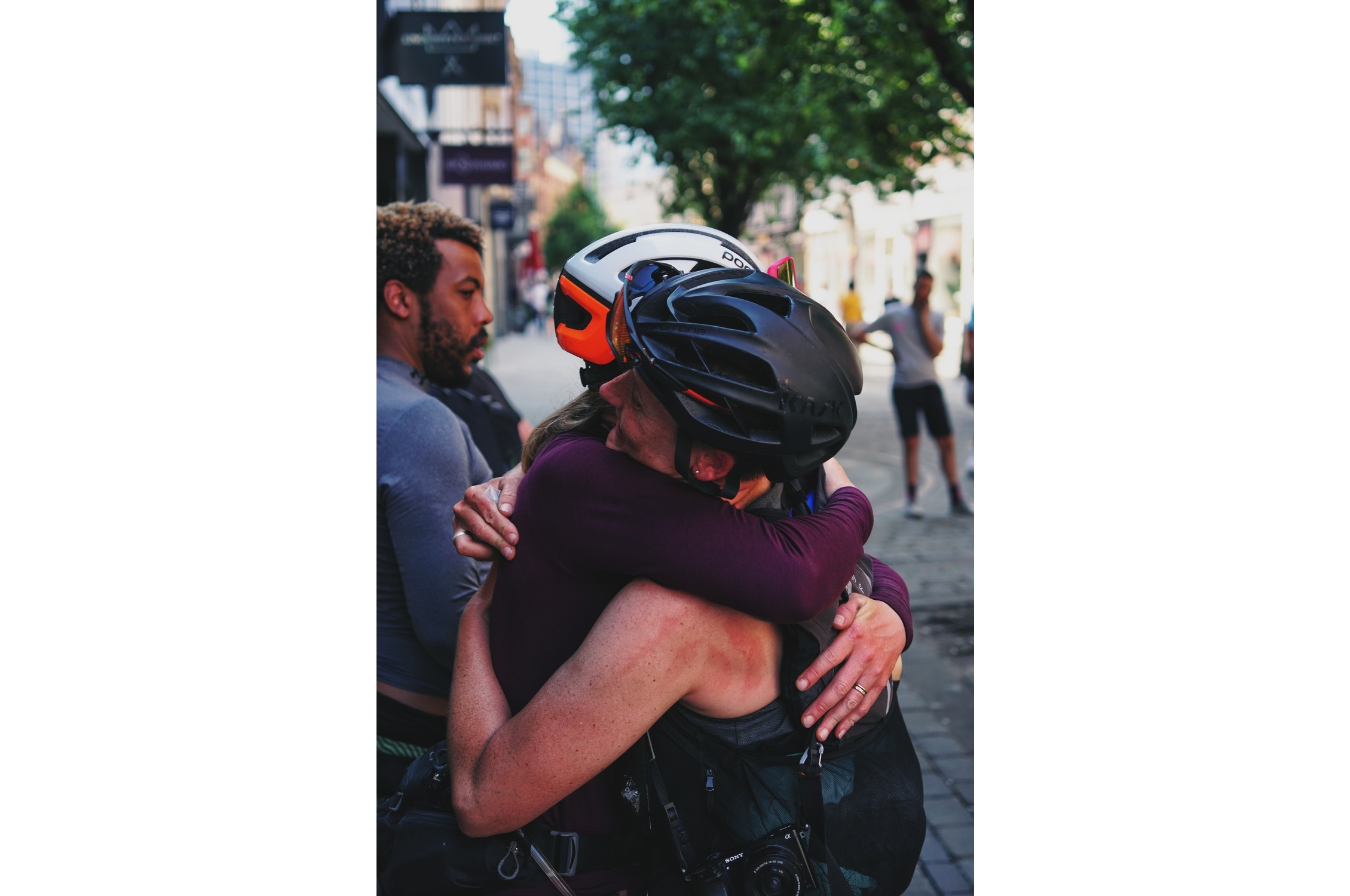
As I did last year with the Veneto Trail and the Asiago Loop, this year I would again opt for a format that I absolutely love: combining a few days of solo cycling with a non-competitive event to embrace the more social aspect. Additionally, taking only one long trip a year and using it as an opportunity to extend my stay and explore a couple of routes is, in my opinion, a great way to approach that complex balance between responsible mobility and not giving up on visiting places outside of one’s own territory.
The choice this year would be to ride solo for a few days on one of my friend Calum Munro’s Roam Scotland Rally routes and then link it up with Rapha’s Pennine Rally. Here’s how it all came about.

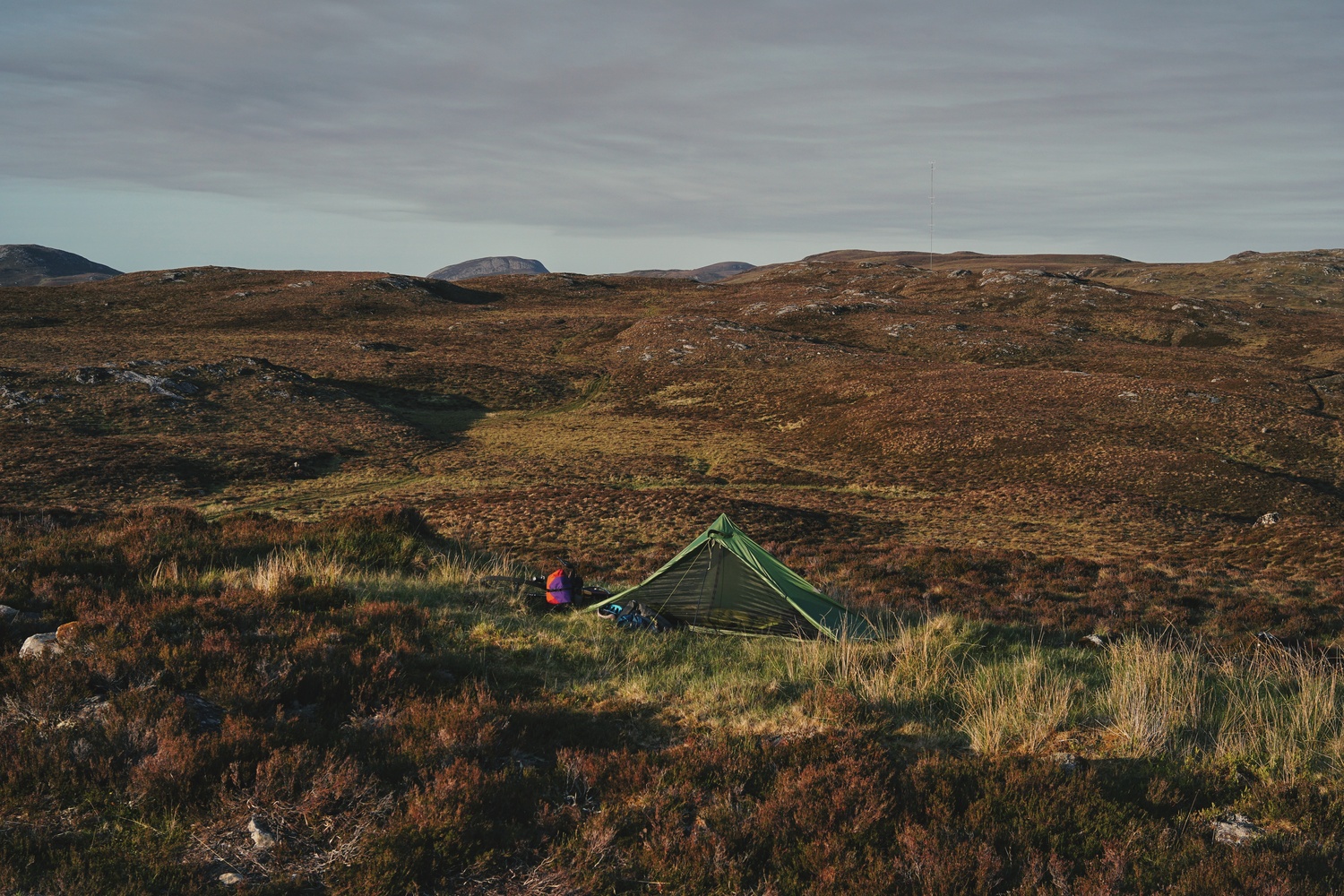






«TIERRAS ALTAS»
When people talk about the problems of depopulation in my region, they usually refer to the fact that in Europe, similar demographic figures can only be found in northern Scandinavia and the Scottish Highlands.
The term «highlands», Tierras Altas in Spanish, refers, among others, to some areas of Teruel or Soria. In Teruel, part of the RAASP runs through it, and Soria has a region of the same name, partly covered by the XL version of MV.
On the other hand, the Rewilding Europe Foundation aims to reintroduce species that have disappeared, as a form of habitat improvement and a chance for the future. One of its action zones is the «Iberian Highlands«, an area that includes the Montes Universales and the Alto Tajo, with the reintroduction of species such as the Black Vulture, the Taurus or the Przewalski’s Horse.
Too many signs around me, it was time to go and see the similarities and analogies with the Scottish Highlands.



My debt to Calum Munro
A visit to Calum has been on the agenda since 2019. I consider Roam Scotland Rally and MontañasVacías to be brother projects, driven by the same values and philosophy. Both belong to the same batch of projects that emerged after TNR 2018. Calum, his wife Harriet and I were basically the first to approach Piazza Bodoni in Turin on the departure day of that trip, and they were the first people I spoke to. Months later, like two pregnancies, we both gave birth to our respective creatures: Roam Scotland Rally and MontañasVacías.
The Roam Scotland Rally (RSR) was born as a small event or ‘social ride’ to be held each May, with the aim of riding each year one of the five routes proposed by Calum. There is also the opportunity to ride his trails as open routes, with all the information you need on the website and in beautifully produced guidebooks.
For different reasons, the dates have never worked out for me, so this year I took the plunge and wanted to try one of his routes by my own.
So far the RSR has 5 routes: Spine of Scotland, West & Islands, South & Border, East & Cairngorms, Far North. Don’t miss them, check out the RSR website and @roamscotland.

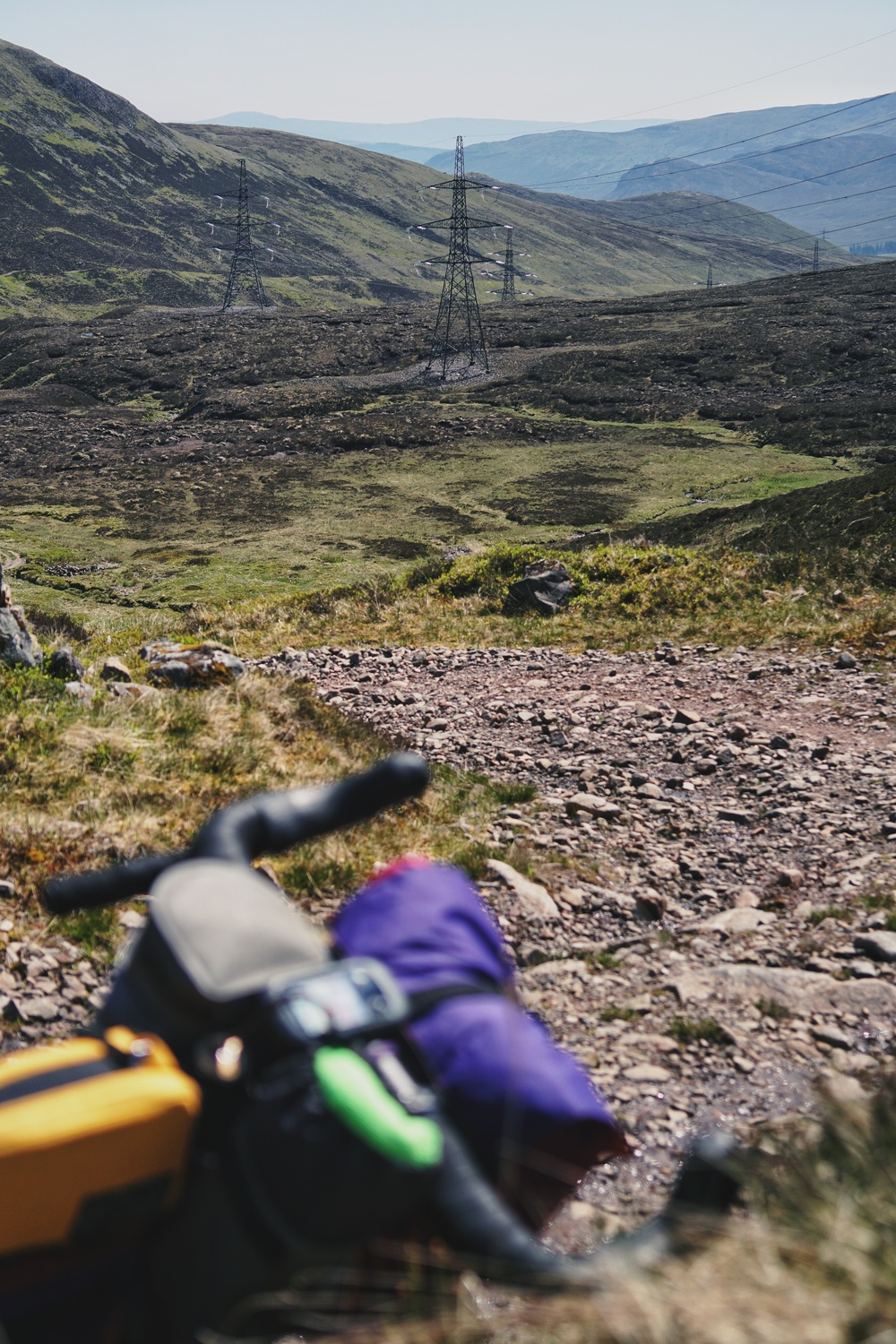
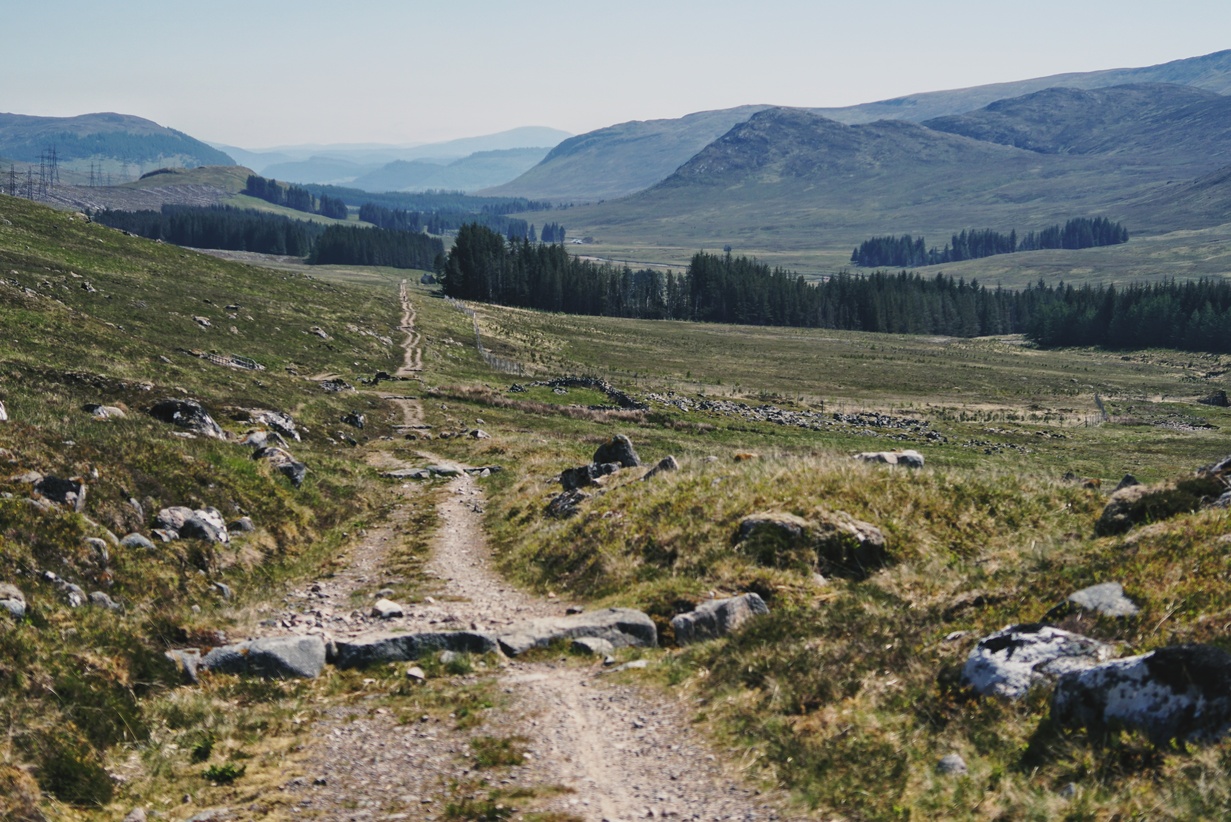
Points of interest of Roam Scotland Rally
The route is exceptionally rideable. I rode it on my gravel bike with 42mm tyres and 1x gearing, 36 on the front, 11-42 on the back, and I’m very happy with the choice. The route is 50% offroad, and a gravel bike is perfect for it.
Lakes such as Loch Glass, Lochan na h-Earba or Loch Ossian will blow you away. They are, for me, one of the highlights of this tour, for the sense of peace, isolation and each with its own personality. However, they’re also a delightful test of where mass tourism is heading, in these areas focused on Loch Ness and Loch Katrine, places that, in my opinion, lost all their appeal because of the crowds of «normal» tourists. When I saw the masses of tourists in these places sacrificed to tourism, I thought: «If only they knew what was up there…!”. But really, it’s better this way. There are environments where inaccessibility by «mainstream» transport is the best protection tool.



The urban miles around Edinburgh and Manchester were one of the biggest challenges for me on this trip. In the Spine of Scotland, I could feel this tension as I approached the Scottish capital. To my surprise, Edinburgh is perfectly embroidered by hundreds of kilometres of canals and cycle paths. Honestly, I had the feeling that I was moving through a parallel city, on another level, where I could get to any point in the city without any sense of danger. Congratulations to all Scots on what a gem of a capital they have, at least in terms of urban mobility.
Once in Edinburgh, at the end of the first leg of my trip, I could meet again with Calum and Harriet five years after we first met in Turin. It was really interesting to share good times talking about the present and future of our projects, the multifaceted dance involved in managing them, or the impact on the villages along our routes. Calum also gave me his opinion on the educational role that this kind of initiative can play, given the current chronic lack of nature and healthy lifestyles in our society, a common epidemic in both the UK and Spain. We could talk for days.
Without any doubt, I would also highlight those moments I booked each day to draw. Just relax, full awareness, savouring what I had experienced and pedaled during the day.

Here you can find a complete gallery of the Spine of Scotland route:
Discovering the Pennine Rally
Earlier this year, when I published my post about non-competitive bikepacking events, I discovered that one of them fitted perfectly into my calendar and could also be combined with one of Calum’s routes: His Spine of Scotland and the Pennine Rally could be perfectly combined on a route linking Inverness, Edinburgh and Manchester.
In short, Pennine Rally is an event based on the Second City Divide, a route linking Glasgow and Manchester (the second largest cities in Scotland and England). It was created by Luke Douglas and Christian Smith after riding the TNR in 2017 (this sounds familiar…) and also inspired by another route called the Badger Divide linking Inverness to Glasgow. The guys at Rapha decided to take the Second City Divide to the next level and created the Pennine Rally as a non-competitive social event that takes place once a year from Edinburgh to Manchester, with inclusivity and good vibes as its hallmarks.
Researching about these routes, I discovered that some call Double Divide to the combination of Badger Divide and Second City Divide, linking Inverness, Glasgow and Manchester, over about 900 kms. I made my own Double Divide, linking the Spine of Scotland with the Pennine Rally, with a result of just over 1000 kilometres.
(In this second part of the trip I switched to my small notebook).



Points of interest of PENNINE RALLY
A good friend of mine, when I told him I was riding the PennineRally this year, described it as a perfect summary of the geography and landscapes of the UK. From the vast expanses of Scotland or the immense Kielder Forest, to the distinctive landscapes of the Yorkshire Dales.
If the scenery was varied, so was the group of souls I rode with. As I said, the social aspect of this trip was a must for me, and as I was travelling alone, another of my motivations was to try to spend at least some time with as many participants as possible. This was one of the biggest rewards I got from the experience.
Inclusivity deserves a special mention. Because of its qualities, I like to define these experiences as ‘domino effect events’. The delicate mix of profiles, backgrounds and levels of experience, together with the non-competitiveness in their DNA, means that after each edition there are first-timers who dare to try other bigger events, who set out to do that dream route on their own, or even to shape that project or idea they have been thinking about for a long time. Something very familiar to me from my own case, or for example the participants of the MV Women’s Rally 2022: I still get excited about the impact it had on many of them.
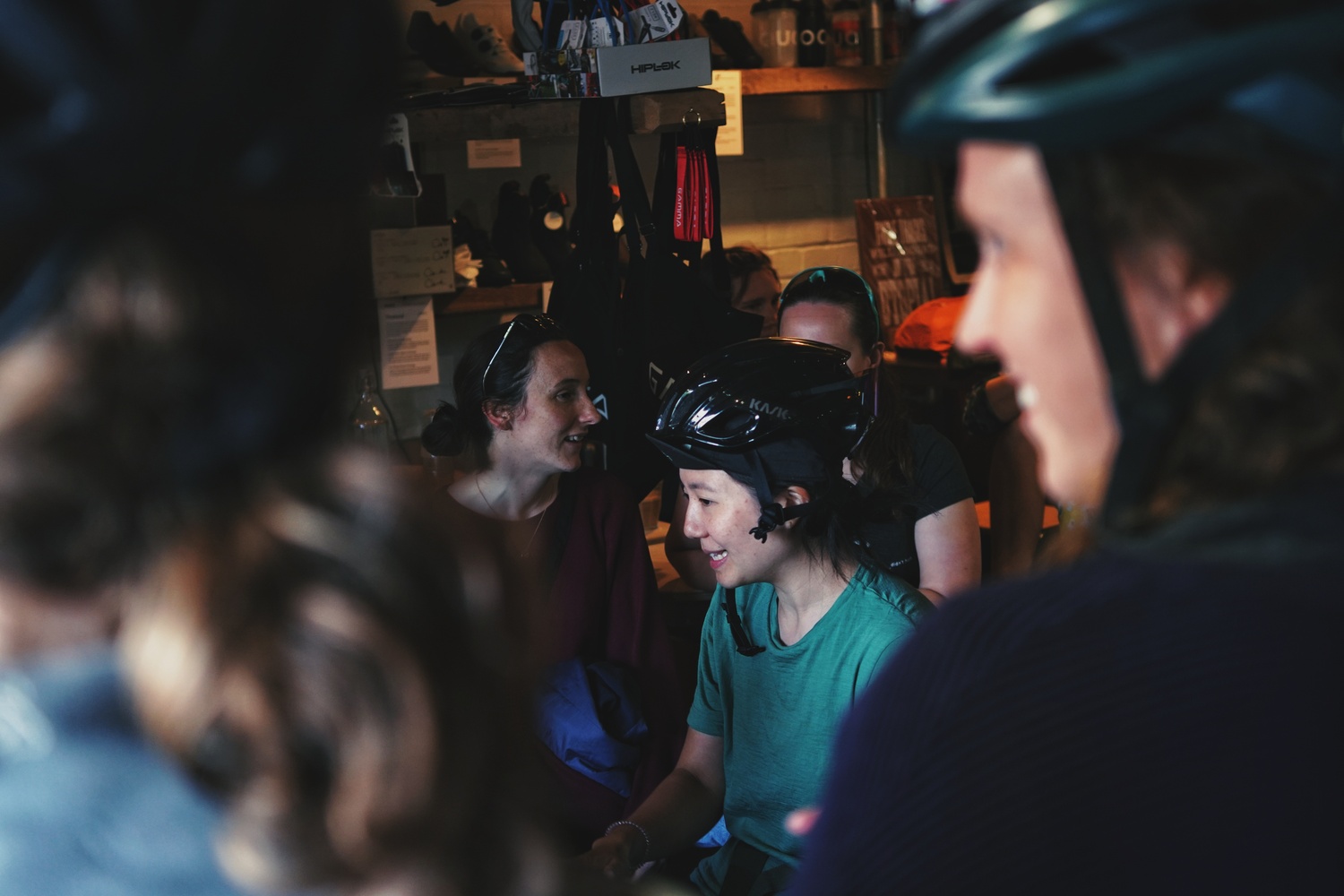



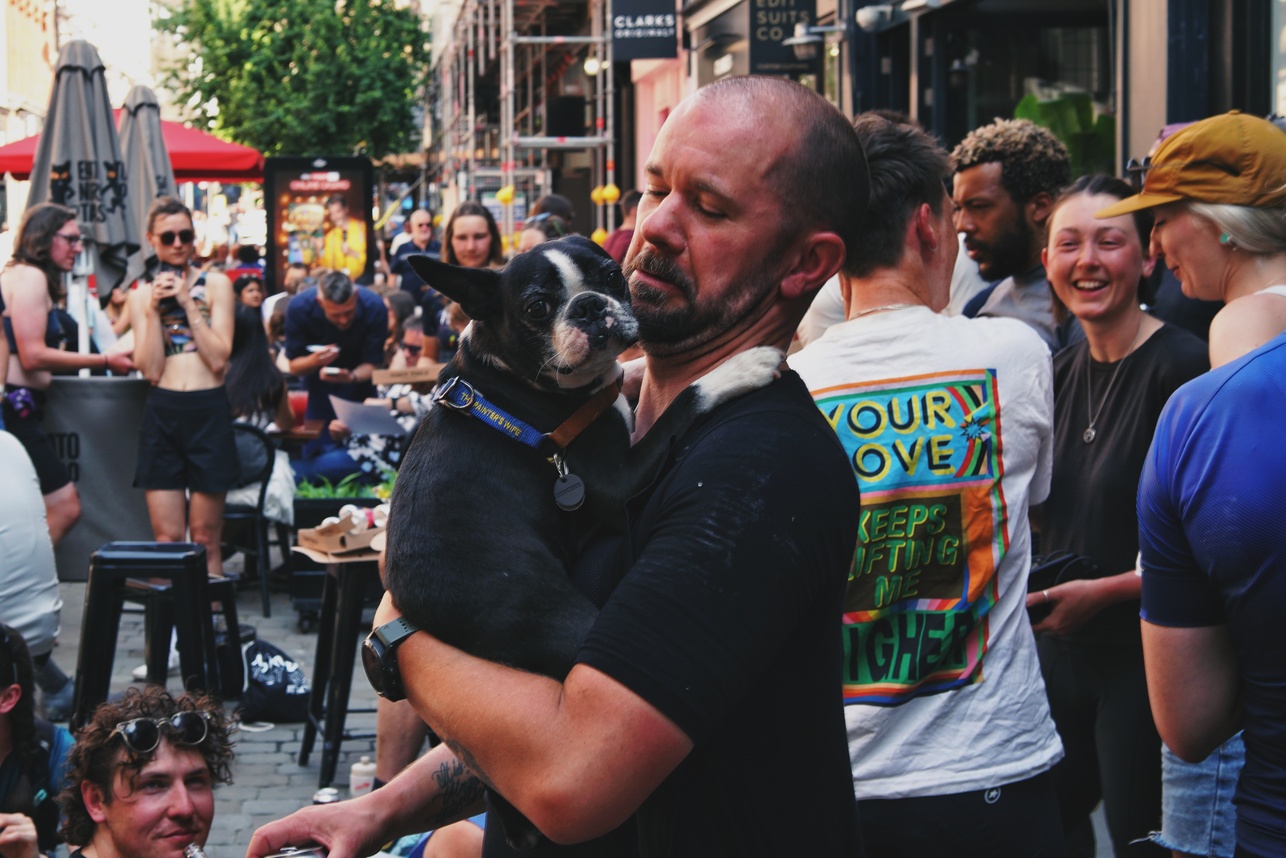
Last but not least, the care with which Louis van Kleeff prepared every detail of this route. Dan Monaghan was also indispensable, armed with his telephoto lens and ready for a good chat. It was a pleasure to see them turning up randomly anywhere along the route, always with a smile on their faces. Well, maybe not so random, as one of the participants said: «If you see Louis, worry, something is about to happen, or a big climb, a hike-a-bike section or something like that«. I didn’t care, I think I told them more than ten times during the rally: «More like this«. It’s clear to me that if there were more of these «creatures» around the world, I wouldn’t think too much about signing up. Cycling needs more of these.



Below you can see the full gallery of my Pennine Rally, and at this link, all of Dan Monaghan’s stunning photos.
Learnings from the Highlands
Although my journey took me out of the Highlands sooner than I would have liked if I had had more time, I was finally able to compare for myself two areas that are so often compared. Here are some of the lessons I learned:
Although the current population figures are similar to those of our rural Spain, my impressions of my time in the Scottish Highlands can be summed up in two ideas: more development and more youth. There was more daily movement in the villages, with more local businesses, and I was struck by the perception that the average age was considerably lower than in my area. In reality, the population trends in the two regions are very different. While the province of Teruel, for example, has lost more than 6% of its population in the last ten years (1000 inhabitants per year), the population of the Highlands is growing steadily, with an estimated increase of 15% between 2010 and 2035. It’s clear that there will be many differences between the two models, but it’s also clear that we would have a lot to learn.



One of my motivations on this trip was to spend as many nights as possible in my tent and to feel part of these landscapes. One of the things that surprised me most was an unexpected parallellism with the moors of Teruel, and that is the acoustic similarity I found: When I closed my eyes with the first rays of sunlight, the amplitude of the landscape and the song of the larks immediately transported me to my beloved moors of El Pobo.
In fact, both landscapes share a common past. Both high altitude moors were lush primeval forests that were cleared hundreds of years ago for timber, pasture, etc., so it is understandable that their flora and fauna have evolved in a similar way. What is the future for the protection of these landscapes? It would be an interesting and multifaceted debate. For those interested, here is a recommendation for a very interesting book on this particular subject: «Feral: Rewilding the Land, the Sea, and Human Life» by George Mombiot.
On this trip I have ridden hundreds of kilometres on «non-motorised» paths, reserved for walkers, horse riders and cyclists, as an extremely positive measure to preserve certain environments and avoid overcrowding. I’m convinced that sooner or later it will come to this part of Spain, I have no doubt. The feedback I received from the villages was very positive.


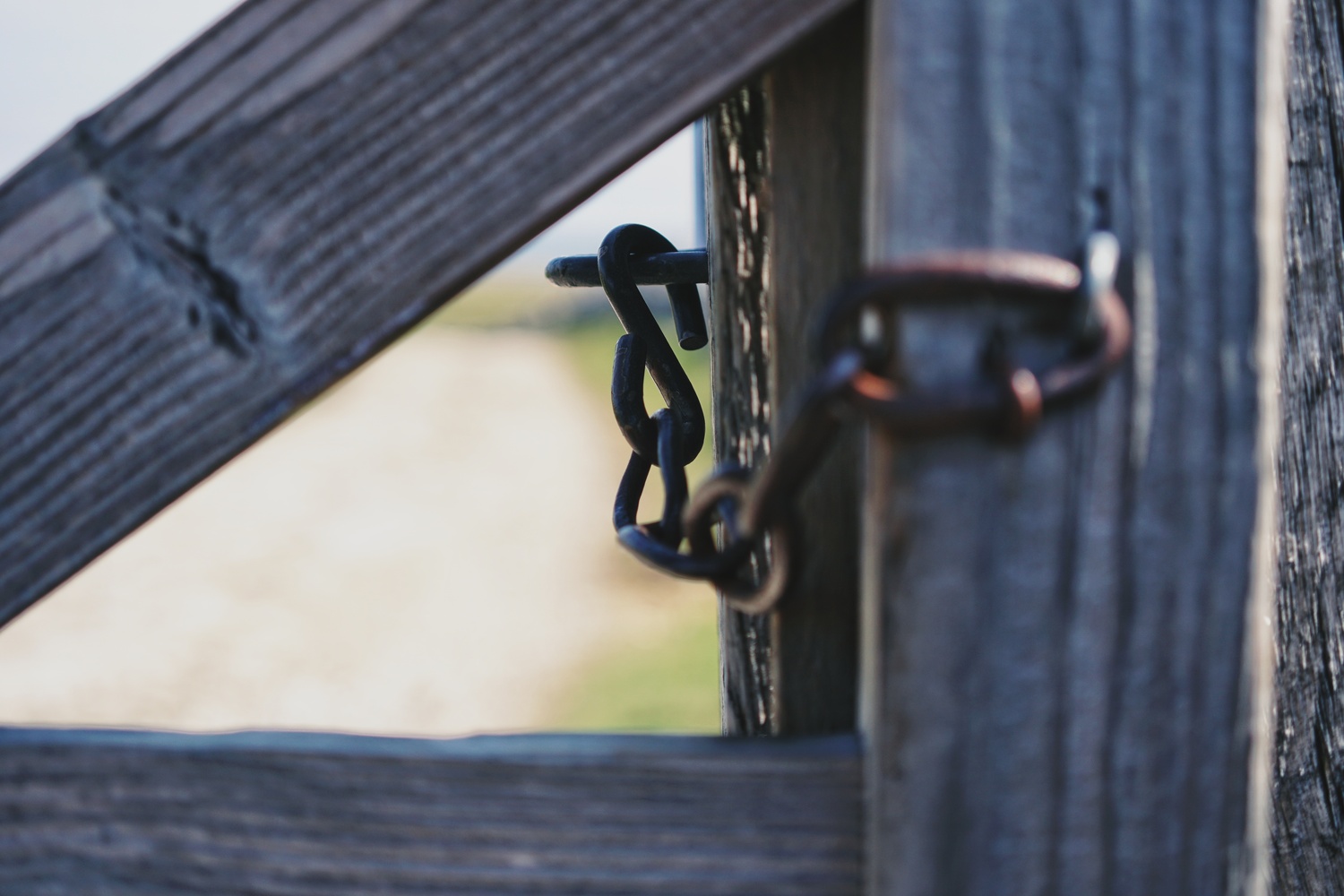

Closely related to this issue, I was struck by the case of the North Coast 500, a government-run route that, according to some locals I spoke to, «is out of control due to poor growth management«, focusing on quantity rather than quality of visitors. This is becoming unbearable for the locals, who have even suggested that the high number of visitors by car, motorbike, 4×4 or camper van doesn’t bring any positive impact to the area, as in most cases «they buy everything in Glasgow and leave nothing here, just rubbish«. According to these people, it is a very seasonal project that brings little or nothing to the area outside of July and August. As I always say, this is not a problem specific to motorbikes, 4x4s or campers, but a problem of user awareness and the poor local development strategy of these initiatives, which, in some cases, can even threaten and deplete the most valuable natural resources of a territory, such as the purity of the landscape (due to the large amount of rubbish in the summer), the silence (due to the constant flow of vehicles), or the quality of the water (in the summer there are not enough toilets for everyone and the sewage system is not able to cope).
I can’t help but think of a few cases that could become similar in our areas. Let’s hope we don’t make the same mistakes, and we can learn from the successes and failures of other areas or projects, so we can take firmer steps towards a slightly better future.

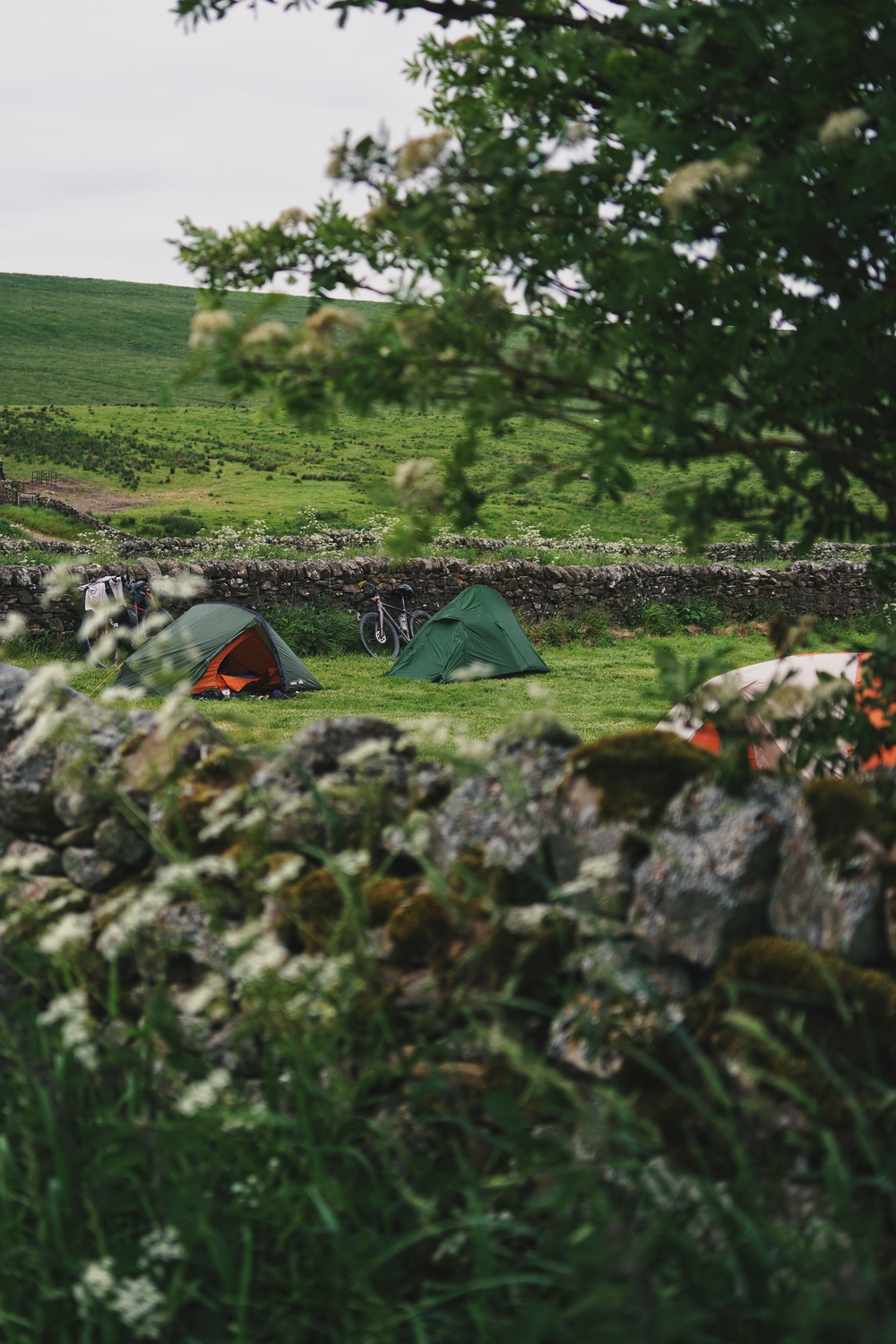


Tips to consider when travelling to the UK
It was my first time riding in the UK. If you are planning to go there, here are some tips that might be useful: -Midges and ticks. Get a good repellent, a mosquito net for your head, and be as aware of the mosquito forecast for the area as you are of the weather forecast. These critters can undermine your morale if you don't have four clear ideas about them. Dawn and dusk are the worst times for midges, so try to avoid these times, or have your tent set up when they appear, and dismantle your campsite before they get up. It didn't always work for me. -Ticks: They're usually repelled by good repellents. A tick-specific tweezer is always a good idea. The trick is to pull them off your body without squeezing, so they don't release anything inside you. Removing them is the most delicate moment. It is best to avoid them as much as possible, which is not easy when you want to camp every day. A good option is to put on your long rain trousers with your socks on the outside before you set up camp, once you have chosen where to pitch your tent from the road.
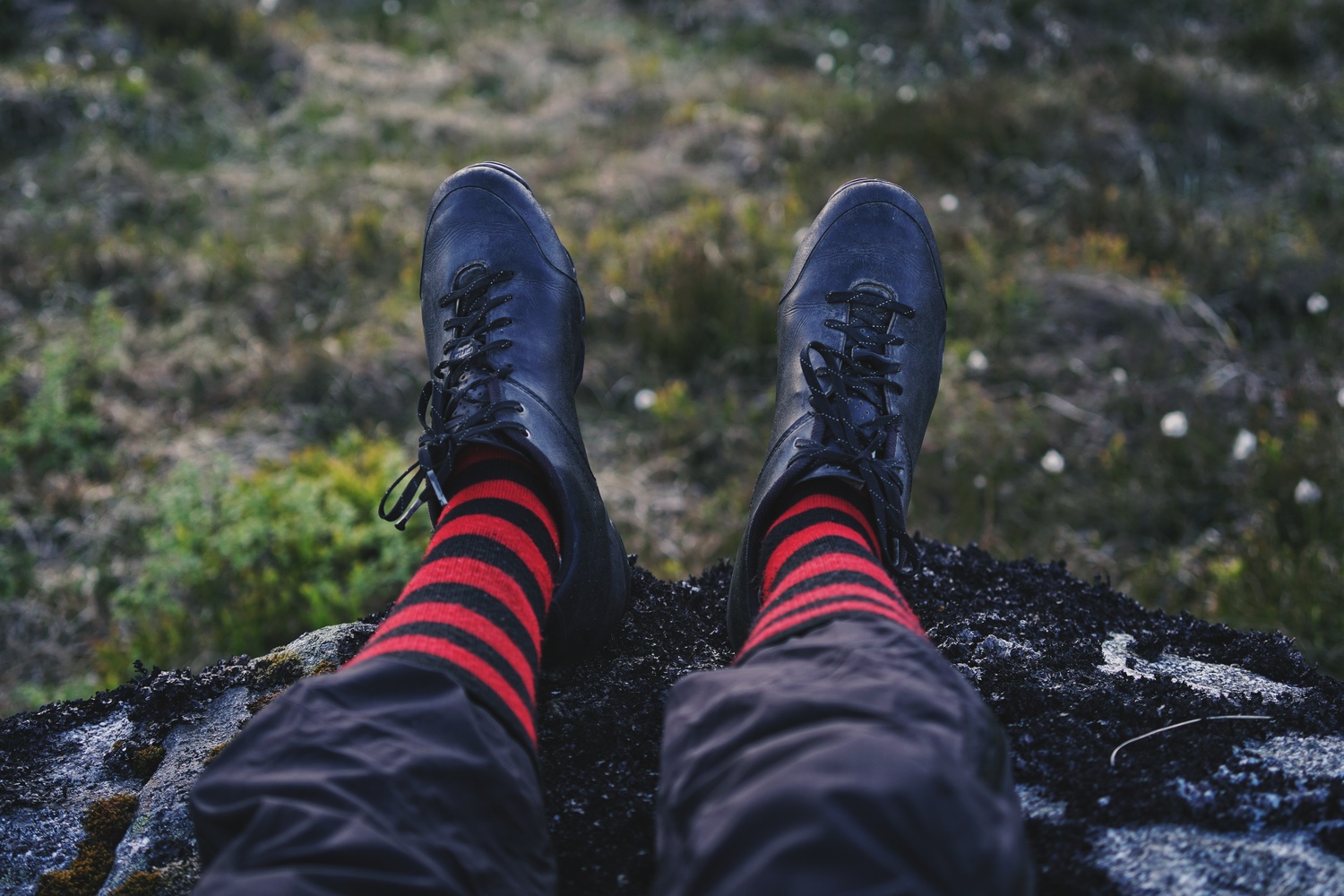

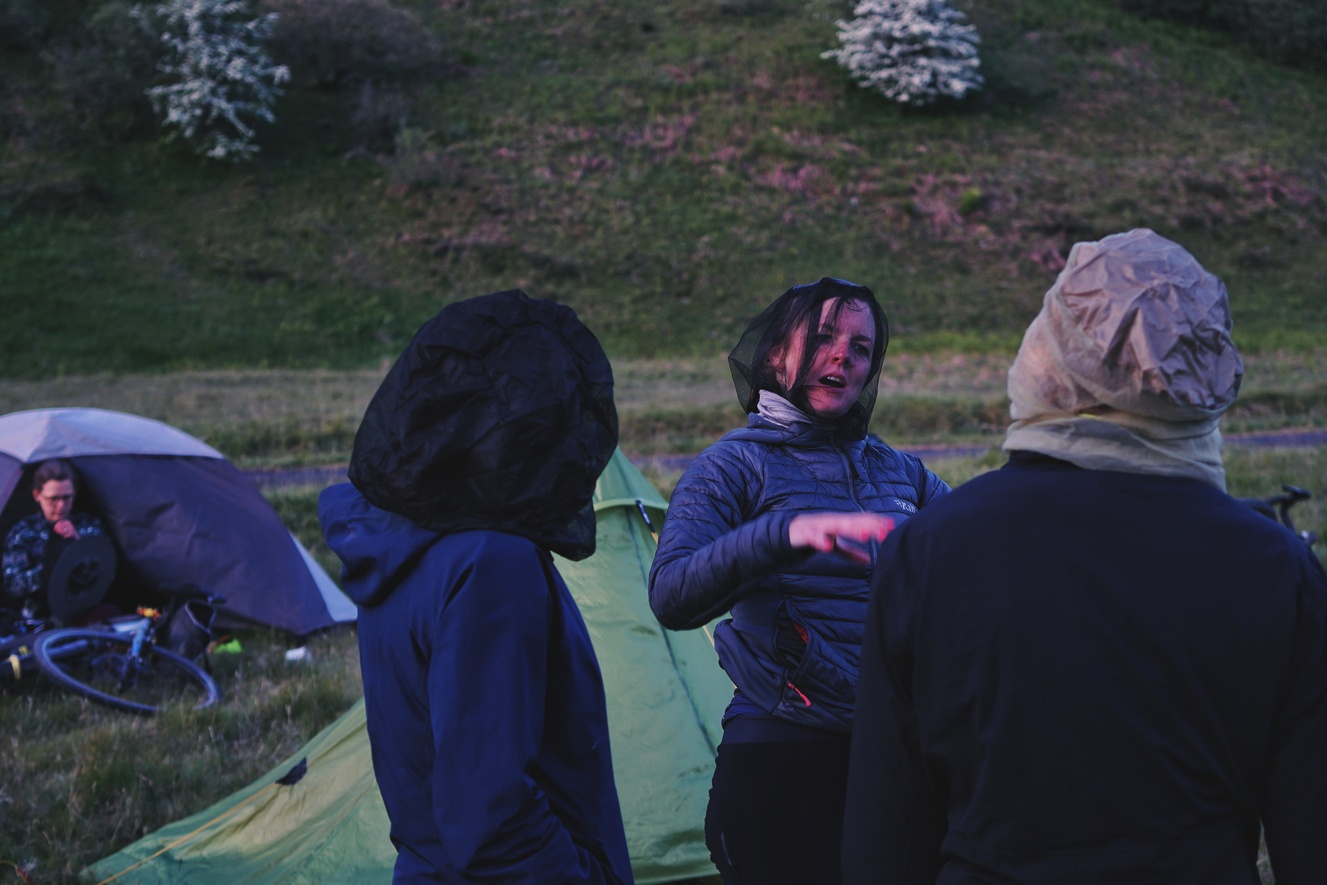

-Rain. 1 or 2 waterproof jackets, rain trousers, waterproof socks and gloves are a must for any trip to the British Isles, even in summer. -Don't trust the altitude. Sometimes at 600m the weather can be as changeable as on a col in the Alps at 2500m. Storms can develop quickly and fog can cover everything in 5 minutes. -Food and water. It is a remote area. In this sense similar to MV. Follow the same recommendations. -Logistics. Although the route was linear, I booked a return flight to Manchester. I left the bike case in the hotel and took a couple of trains to Inverness. From there I cycled first to Edinburgh on the RSR and then to Manchester on the PR, so when I arrived in Manchester I had my bike bag packed in my hotel. I took a taxi from the airport to the hotel to avoid complications. It was not very expensive compared to the price of the room in Manchester. -Trains. The English and Scots define it perfectly: The rail system in the UK is a real "pain in the ass" when travelling by bike, although the truth is that we are pretty much cured of this problem in Spain too. There are a thousand companies offering train services, as the system is privatised, so you'll have to check a thousand websites to find out about timetables, routes and the possibility of booking a space for your bike. In theory, Trainline unifies all the companies, but the reality of travelling with a bike is that you have to check company by company to book a seat for your two-wheeled friend. In my case, I booked trains from Manchester to Inverness on the TransPennineExpress website. Within Scotland, ScotRail works quite well. -Guides. Calum Munro has taken great care in producing his route guides, which are a real delight. You can find out how to get them on the RoamScotlandRally website. -Additional Info. As a starting point, this article from bikepacking.com was very useful: The Complete Guide to Bikepacking Scotland.



